Transforming your yard into a desert oasis is about more than just surviving the heat—it's about thriving in it. Desert landscaping offers a unique blend of beauty and practicality, combining stunning visuals with sustainable design. By incorporating elements like native plants, water-efficient techniques, and natural textures, you can create a space that is both striking and eco-friendly. Whether you're a seasoned gardener or a beginner looking to embrace a low-maintenance approach, these 25 inspiring desert landscaping ideas will inspire you to turn your outdoor area into a stunning landscape that celebrates the simplicity and elegance of arid environments.
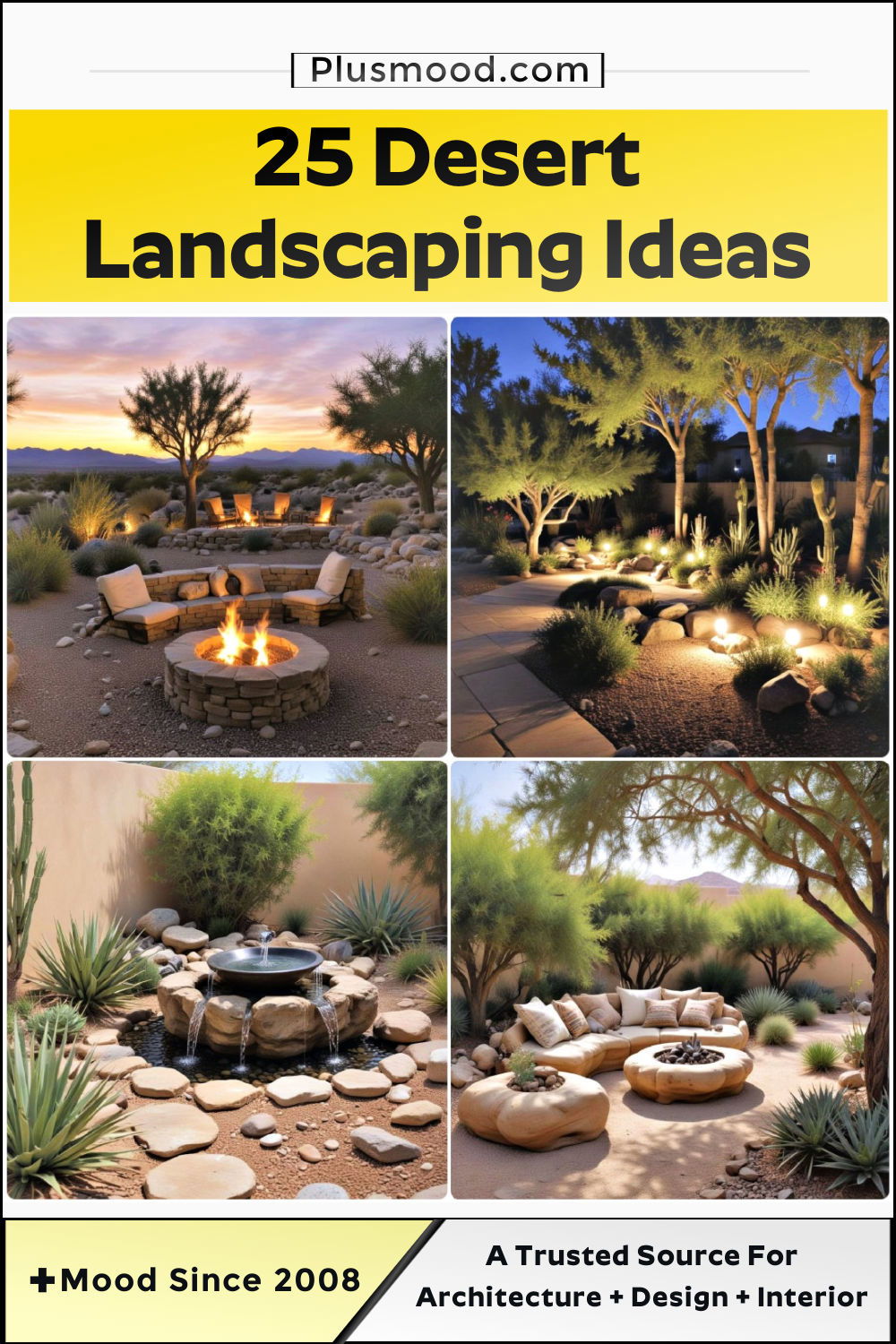
1. Incorporate Native Plants
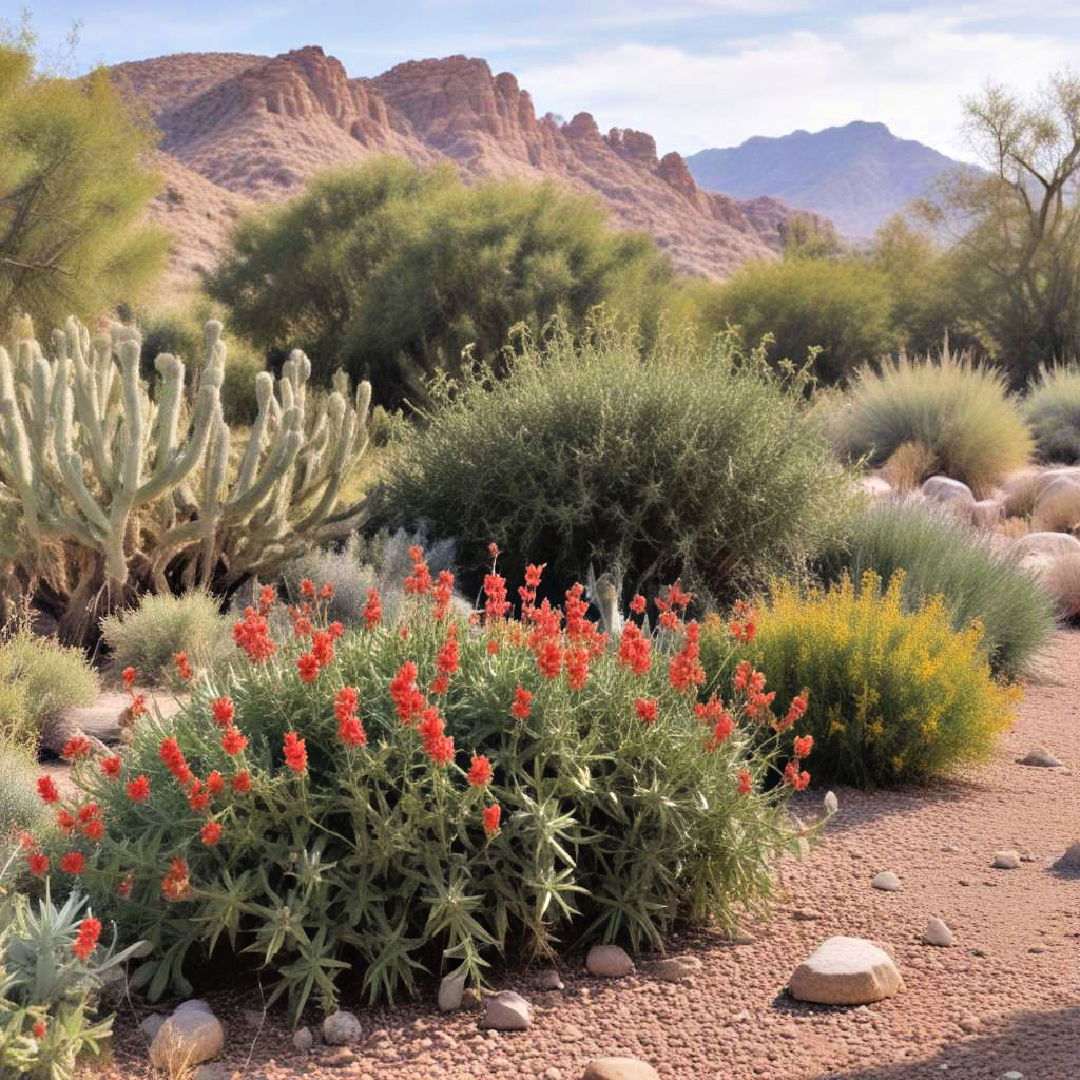
Using native plants makes desert landscaping both beautiful and sustainable. Species like agave and aloe thrive in hot climates, requiring minimal water. Their unique textures and forms add visual interest. This choice not only conserves water but also supports local ecosystems.
2. Rock Gardens for Minimal Maintenance
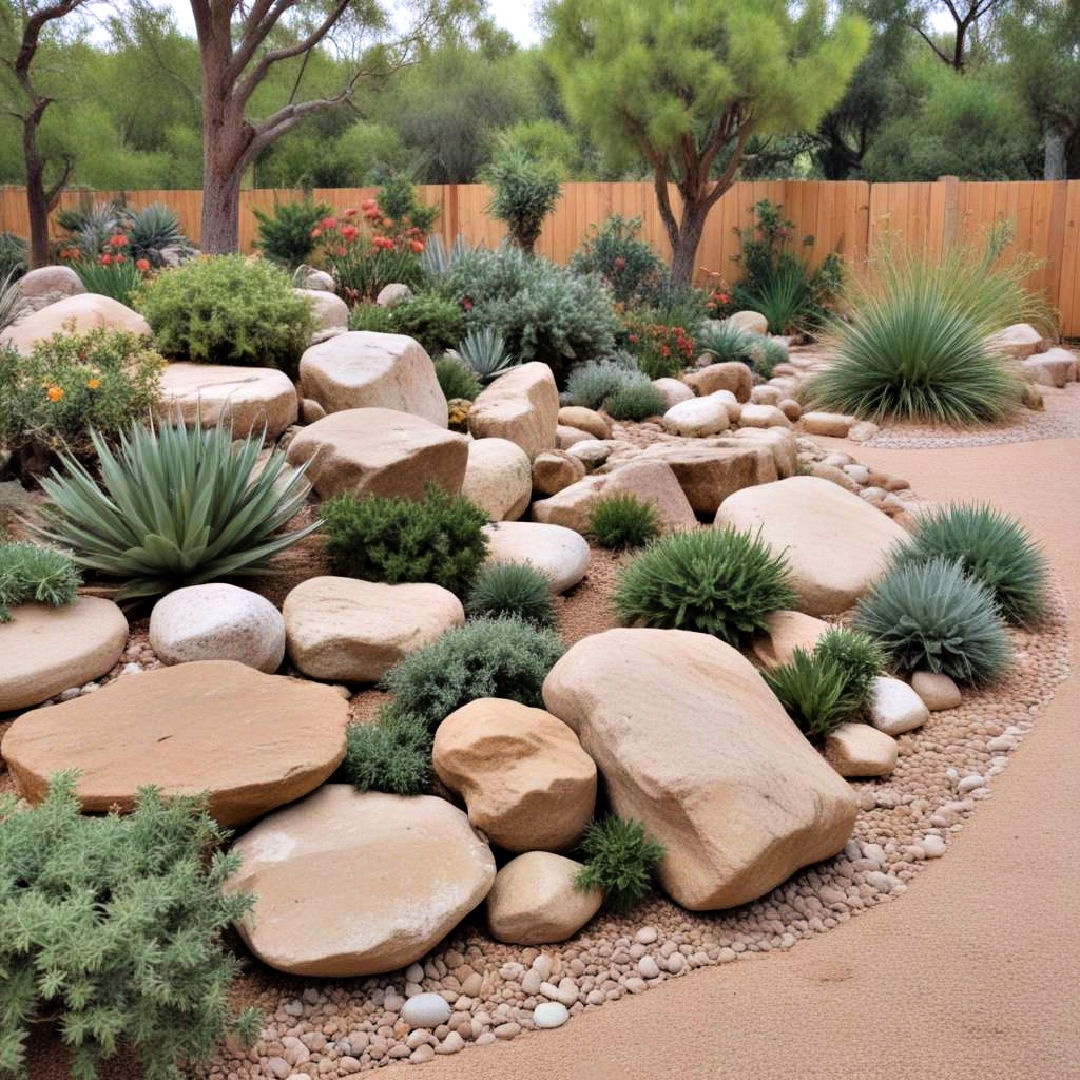
Rock gardens are a superb option for desert landscapes. By combining various stone sizes and colors, you can create an aesthetically pleasing, low-maintenance feature. Rocks retain heat, aiding in ground temperature regulation. Plus, they never need watering!
3. Xeriscaping for Water Conservation
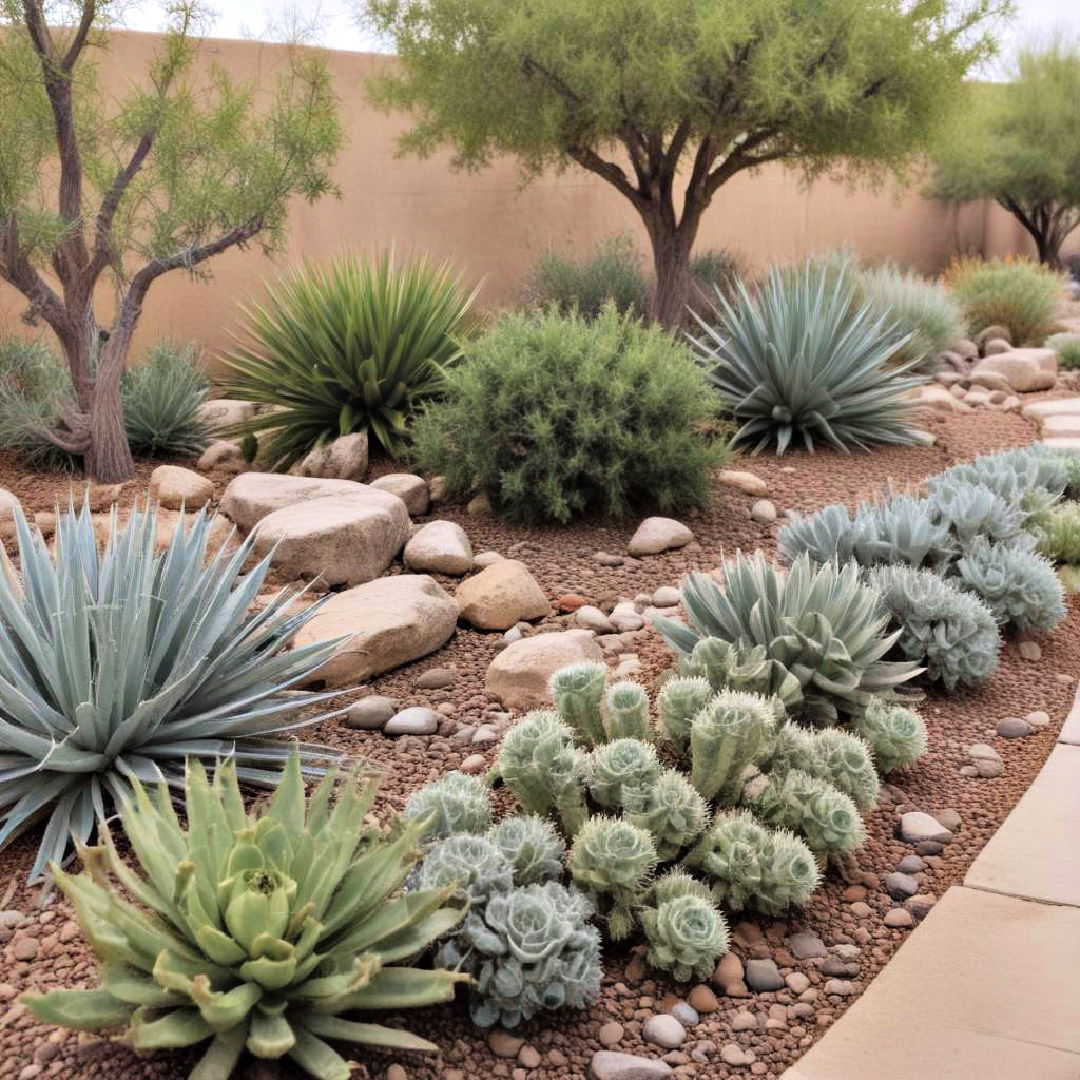
Transform your garden with stunning desert landscaping ideas perfect for arid climates. Xeriscaping is an eco-friendly landscaping approach that mirrors minimalist design principles for arid regions. By focusing on drought-tolerant plants, such as succulents and cacti, this design significantly reduces water usage. It's not only practical but also creates a striking visual appeal with its unique plant arrangements.
4. Desert Grasses for Texture
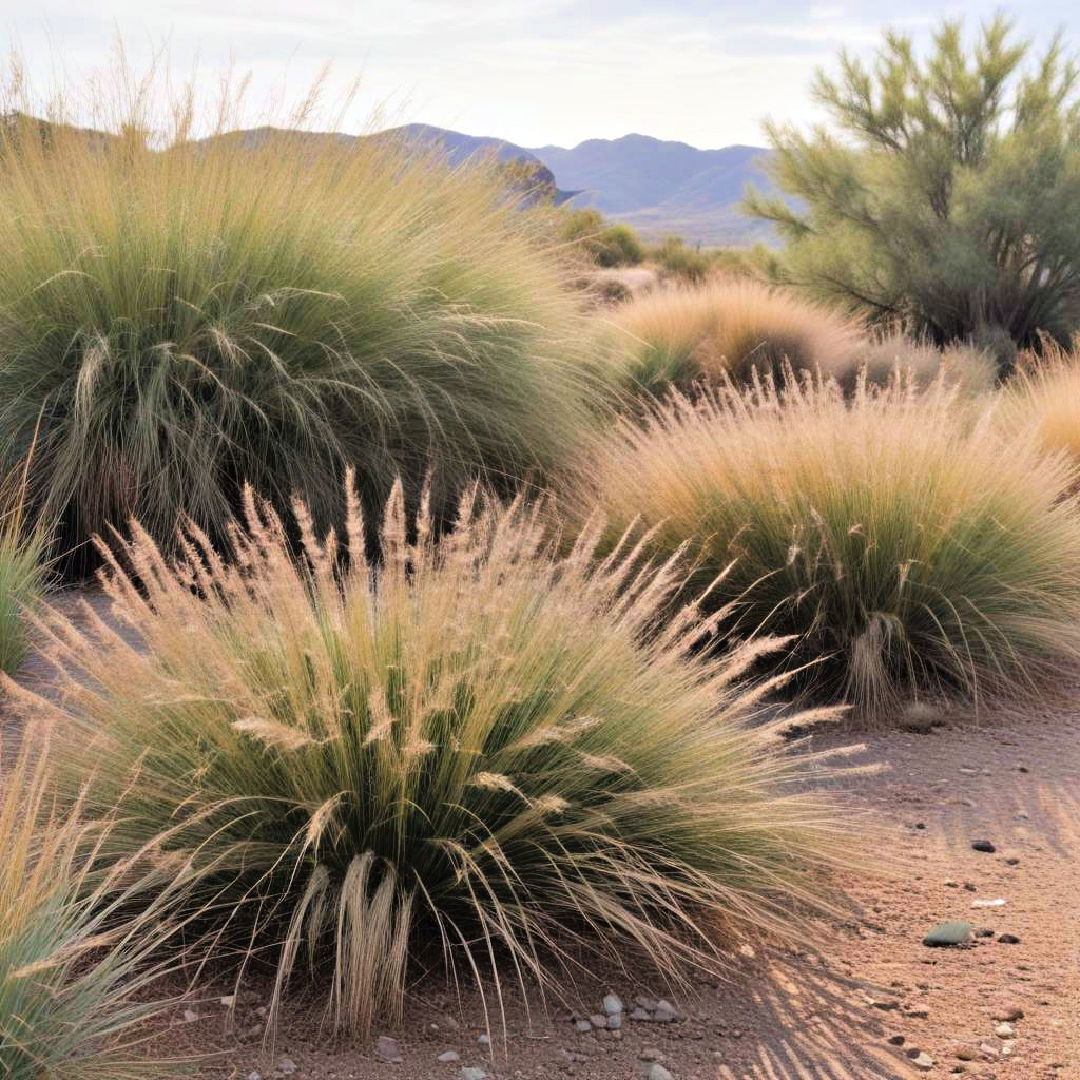
Desert grasses, like muhly and deer grass, can add great texture to your landscape, blending beautifully with green and beige tones. They are resilient and well-suited to hot conditions. The movement of grasses in the wind brings a dynamic element, enhancing the overall aesthetic while requiring minimal care.
5. Succulent Gardens for Variety
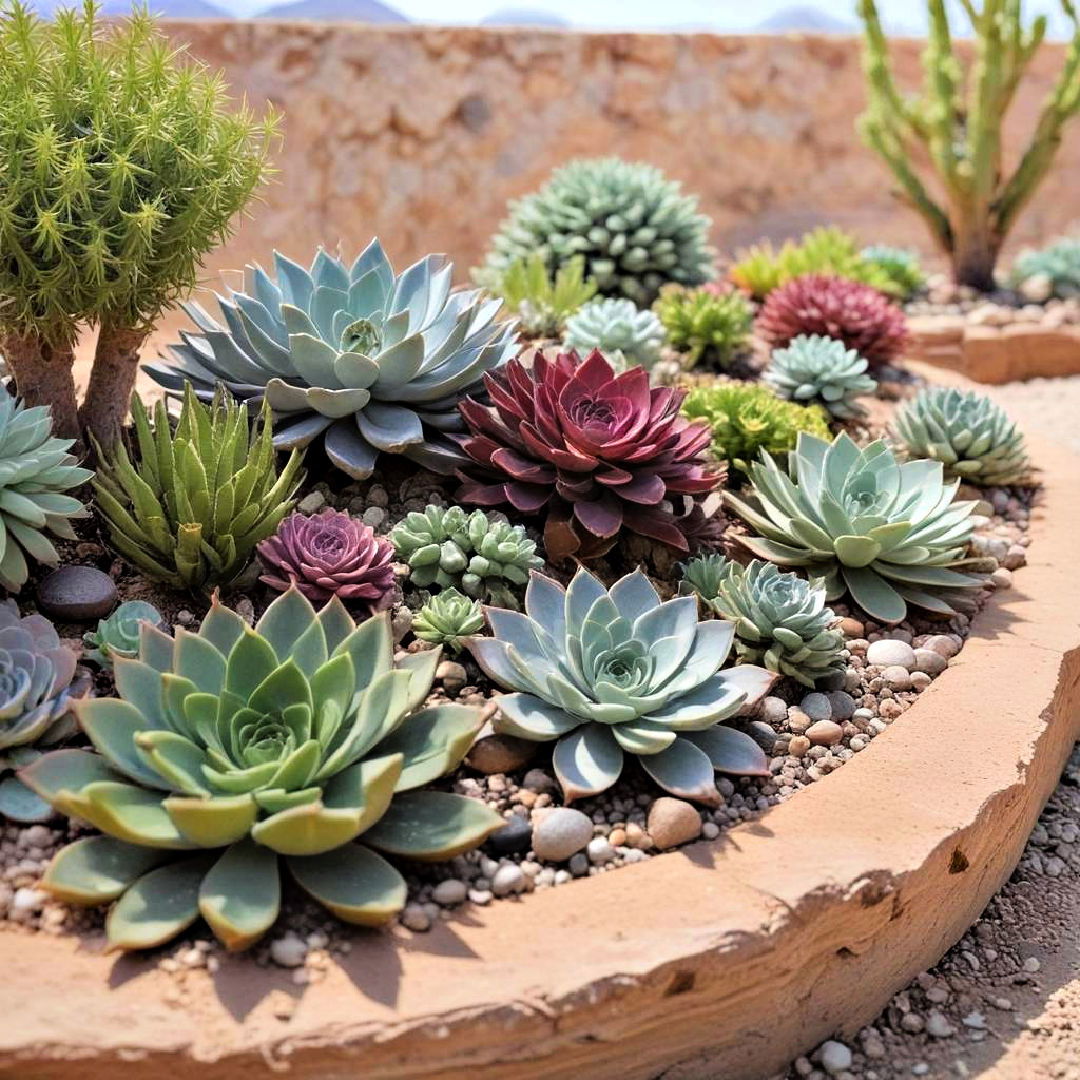
Succulent gardens are ideal for adding a variety of shapes and colors to your desert landscape. These water-storing plants are exceptionally heat-tolerant, offering both beauty and endurance. Succulents come in many forms, from spiky to rounded, adding depth and interest.
6. Artistic Pathways
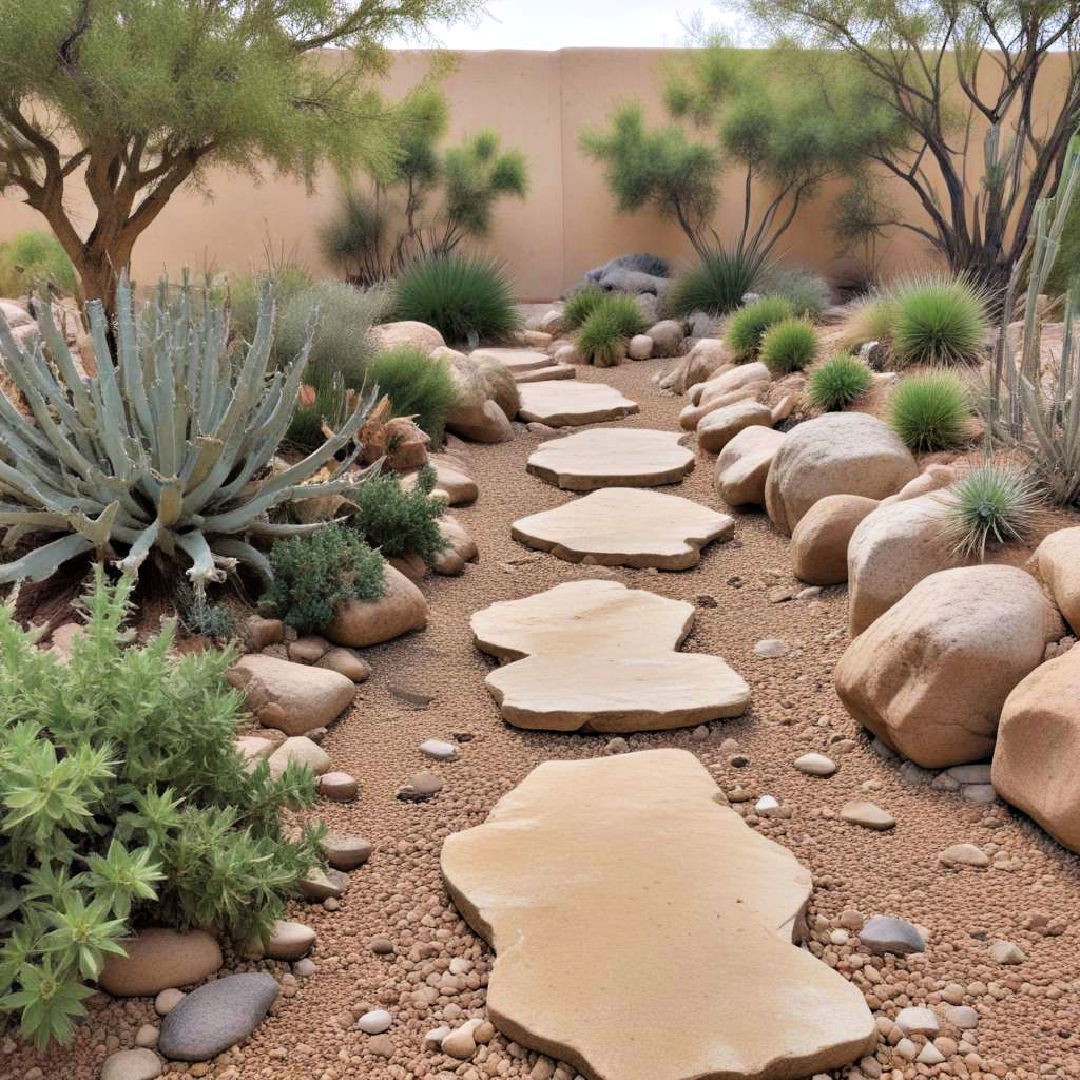
Consider creating artistic pathways with stones or decomposed granite, inspired by the calming blue and beige palette. These elements guide foot traffic and add an organized look to your desert garden. Materials like gravel and flagstone are excellent for this purpose, requiring little upkeep while enduring harsh climates.
7. Water Features for Contrast
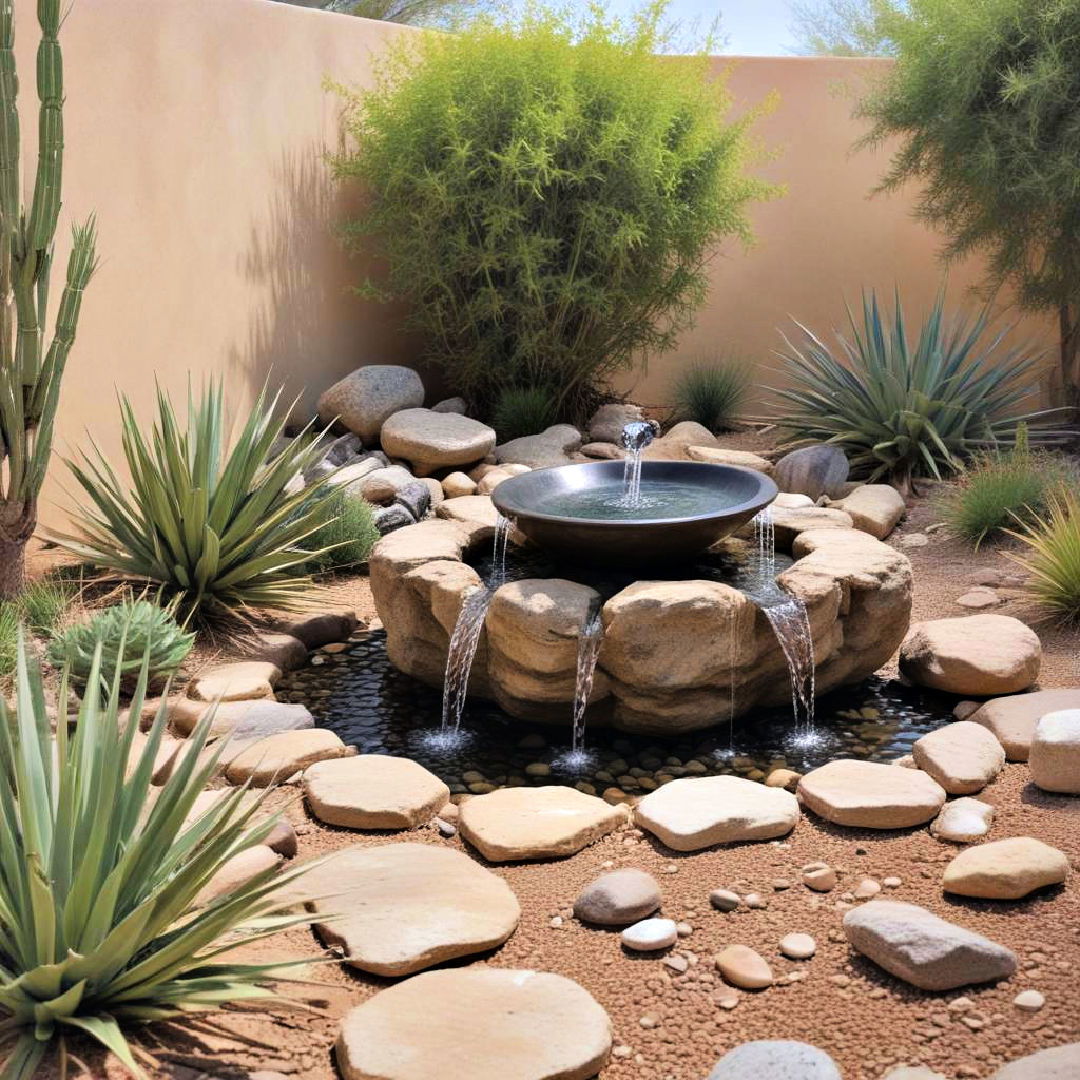
Water features, like small fountains or ponds, create a striking contrast in a desert landscape. The presence of water brings tranquility and balance, despite being in an arid environment. Opt for recirculating systems to minimize water usage while still enjoying the cooling effects.
8. Raised Beds for Elevation
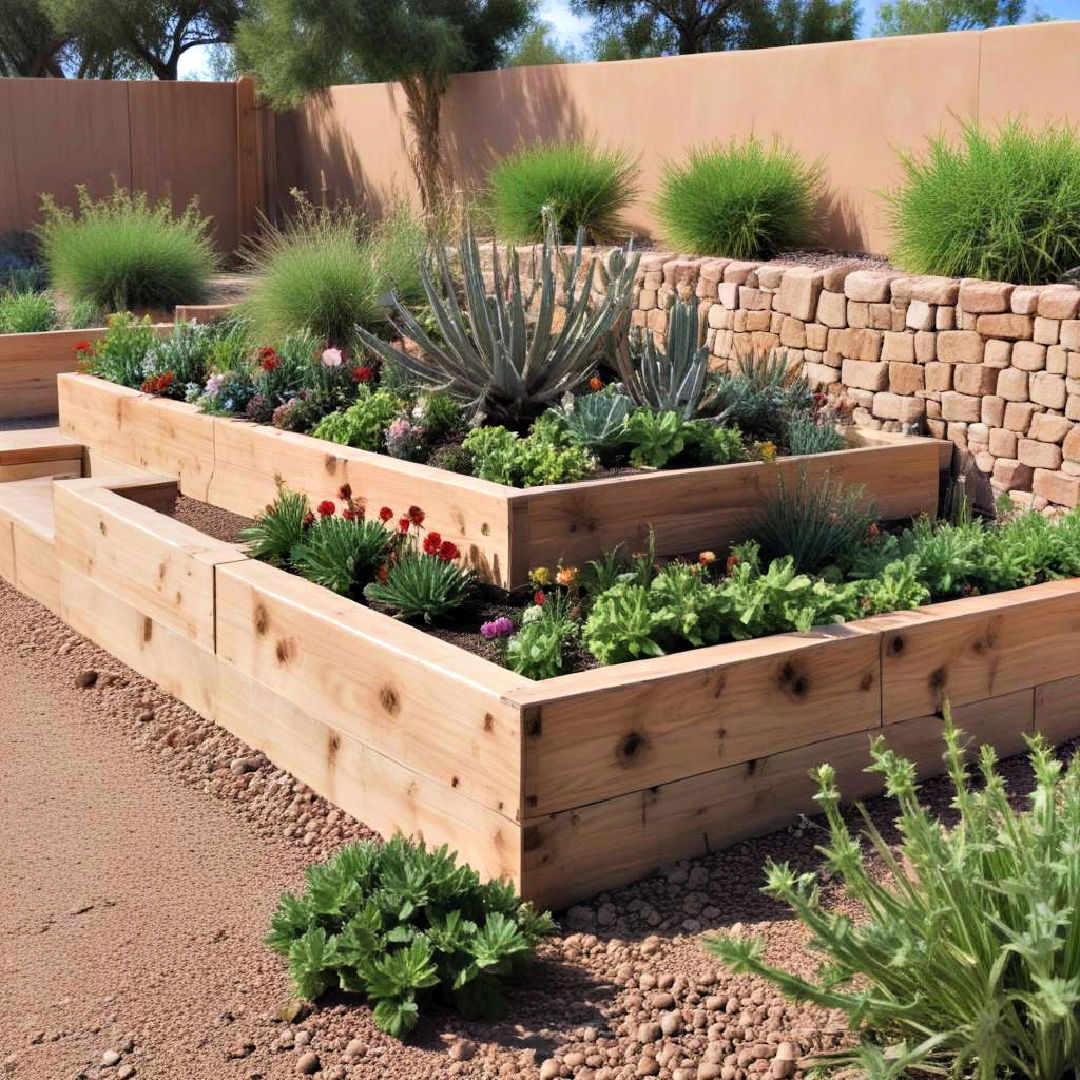
Discover unique desert landscape ideas to create a beautiful, low-maintenance outdoor space. Raised beds can offer elevation and structure to your desert garden, much like wood slat features bring architectural interest. These are perfect for showcasing diverse plant types while improving drainage. Construct beds from stone or wood to add architectural interest. They make gardening easier and give a polished look.
9. Shade Structures for Comfort
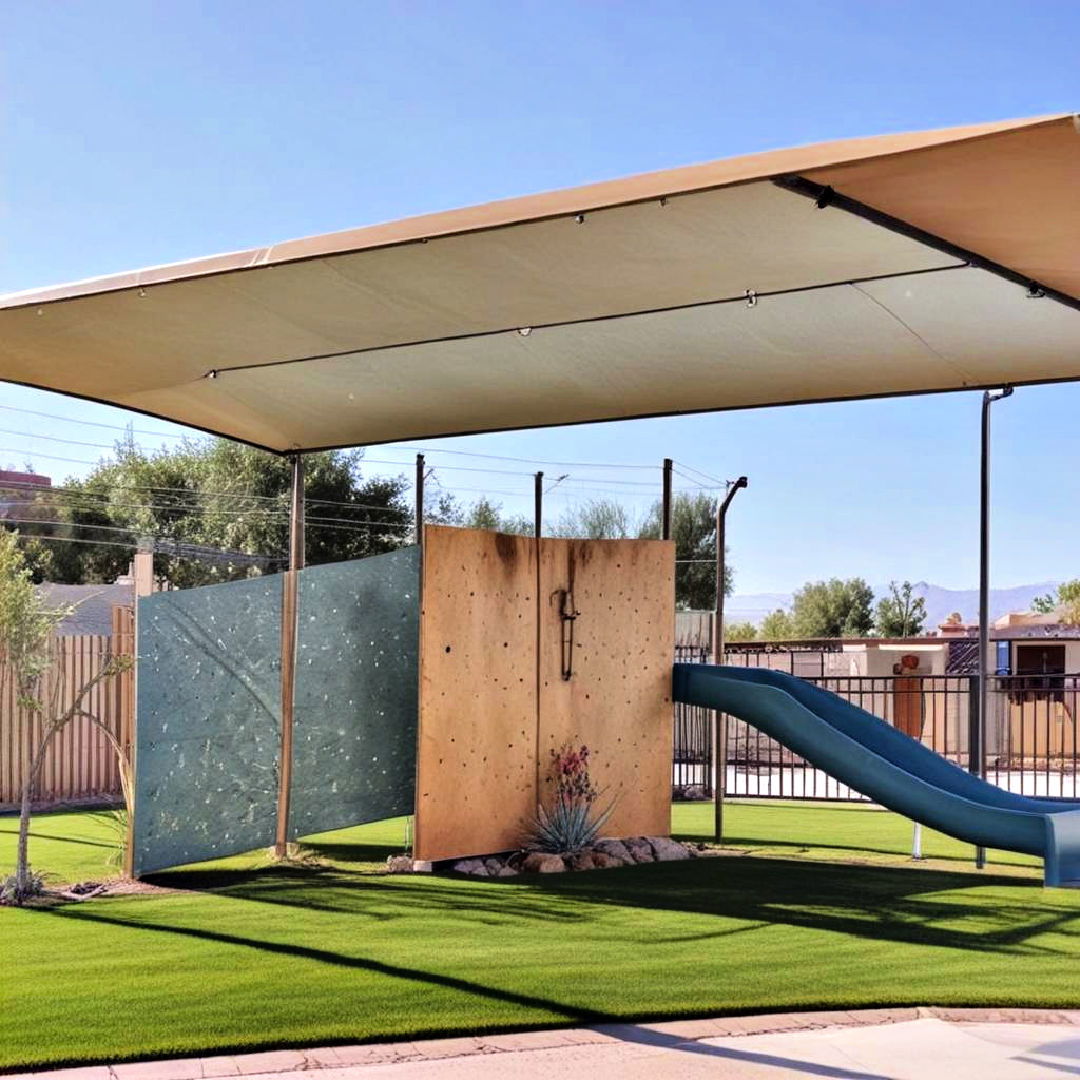
Introduce shade structures such as pergolas or canopies to create comfortable outdoor spaces. These provide necessary relief from intense sun, making your garden more usable during hot days. Use materials like wood or metal for durability and to complement the desert aesthetic.
10. Decorative Gravel for Ground Cover
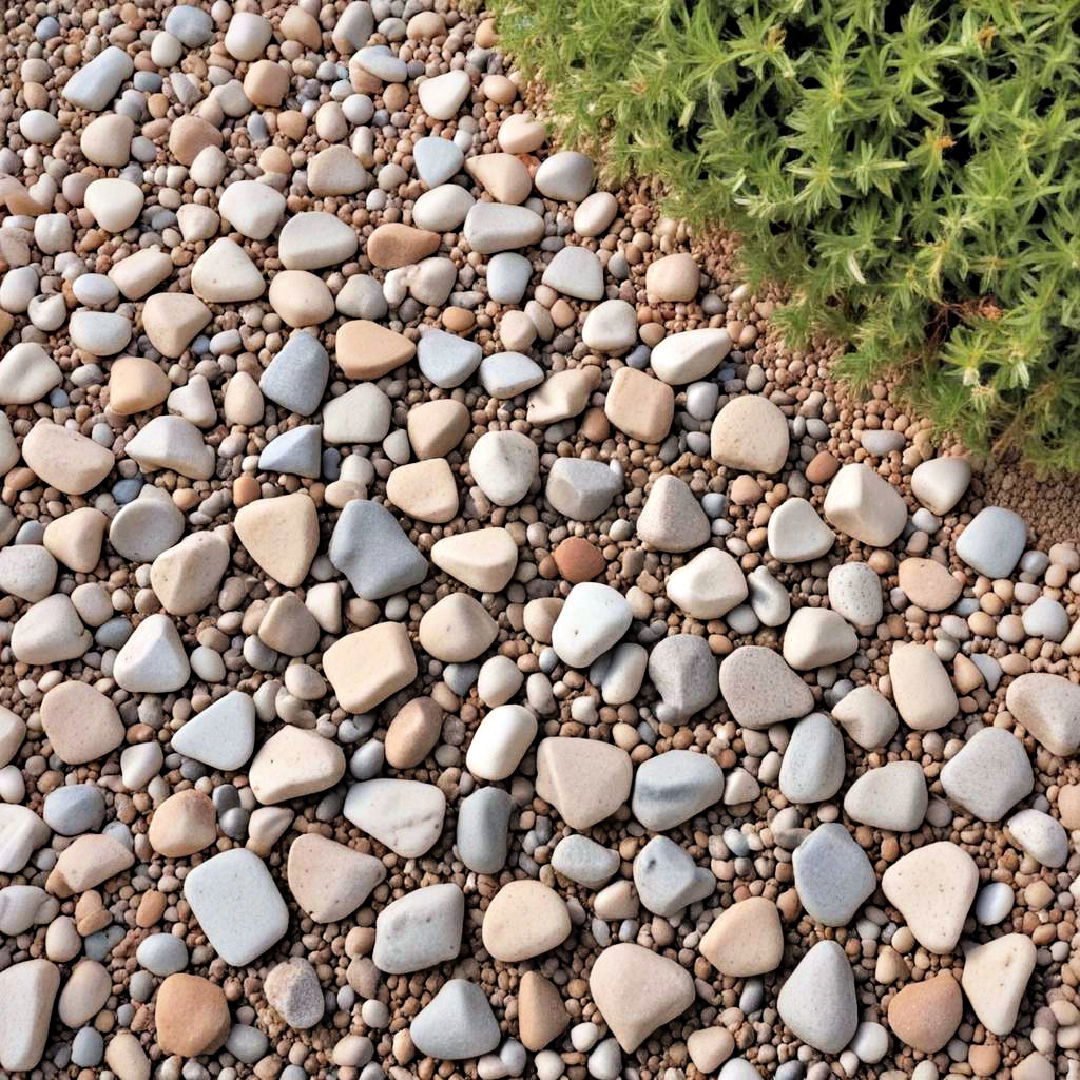
Utilize decorative gravel as ground cover to enhance your desert landscape. Gravel is available in various colors and sizes, offering a customized, polished appearance. It helps retain soil moisture and reduces weed growth, making it a practical and visually appealing choice.
11. Vertical Gardens for Limited Space
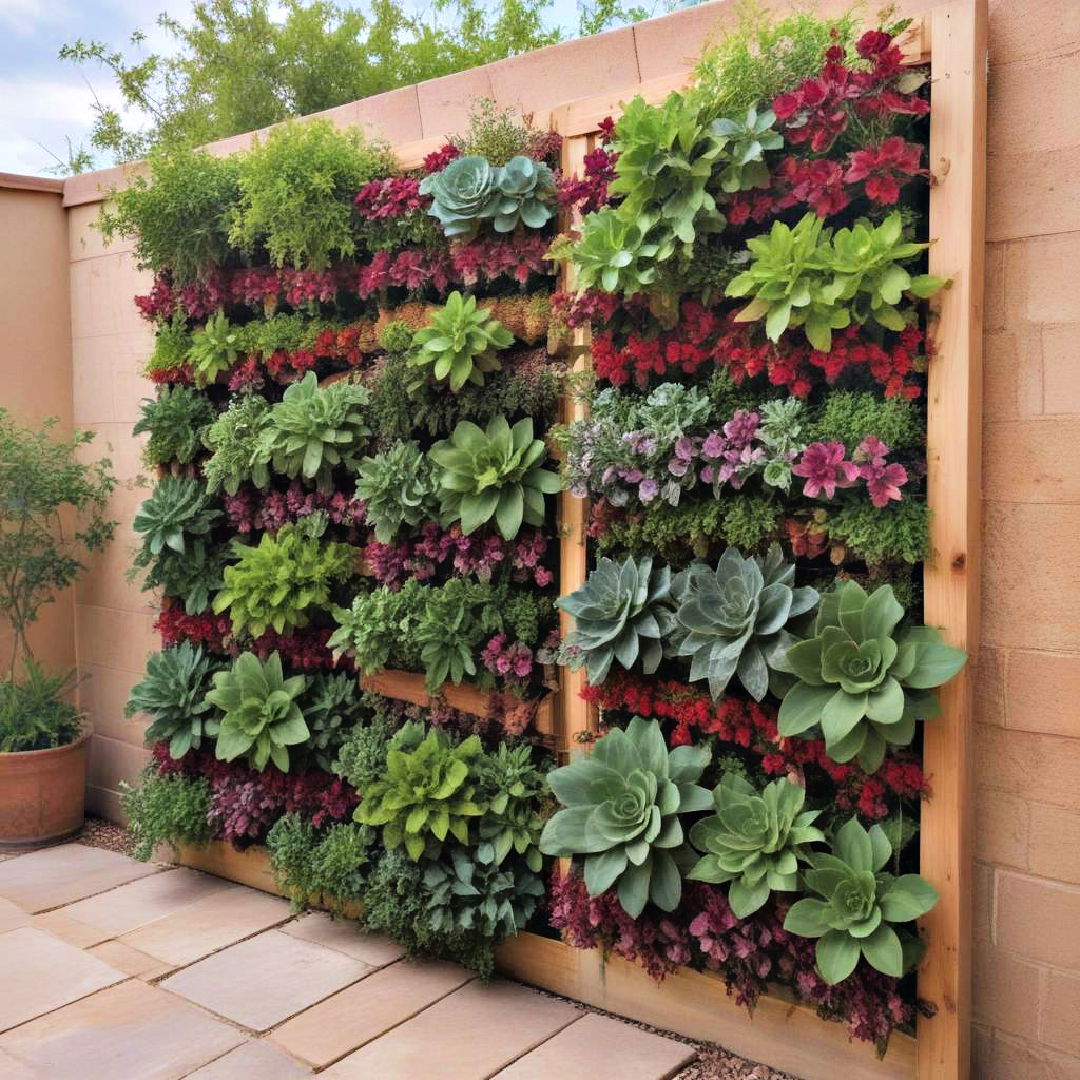
Vertical gardens are a perfect solution for small desert yards, reflecting minimalist design principles with their clean, space-saving structures. By using vertical planters or trellises, you can maximize limited space. Succulents and trailing plants work especially well in these setups, allowing you to create lush, green walls with minimal water.
12. Metal Sculptures for Artistry
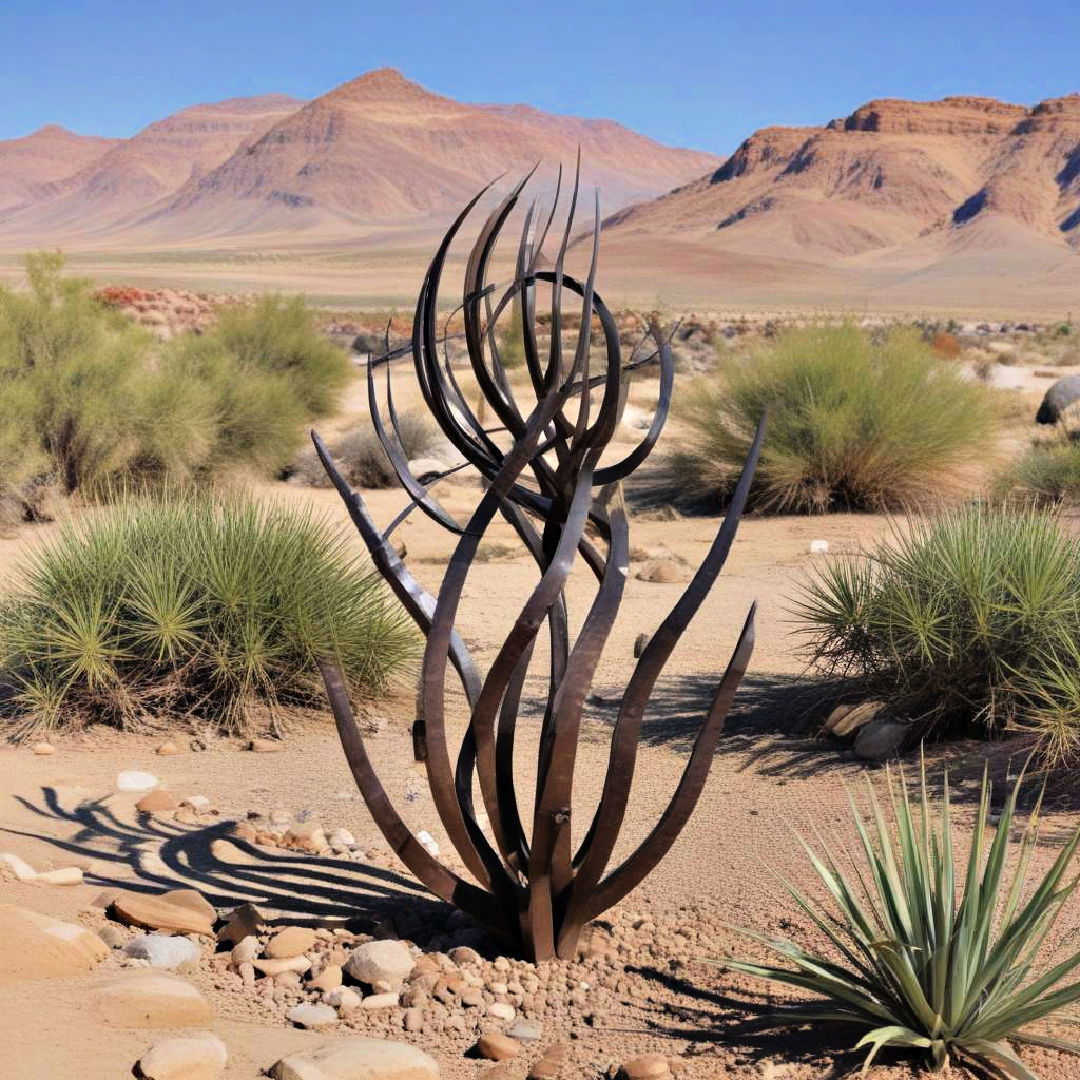
Incorporating metal sculptures into your desert landscape adds an artistic flair, similar to the bold contrasts seen in black and white designs. Metals like copper or steel can weather beautifully, blending with the natural surroundings. Sculptures can serve as focal points, enriching the visual appeal of your garden while requiring zero maintenance.
13. Mulching for Soil Protection
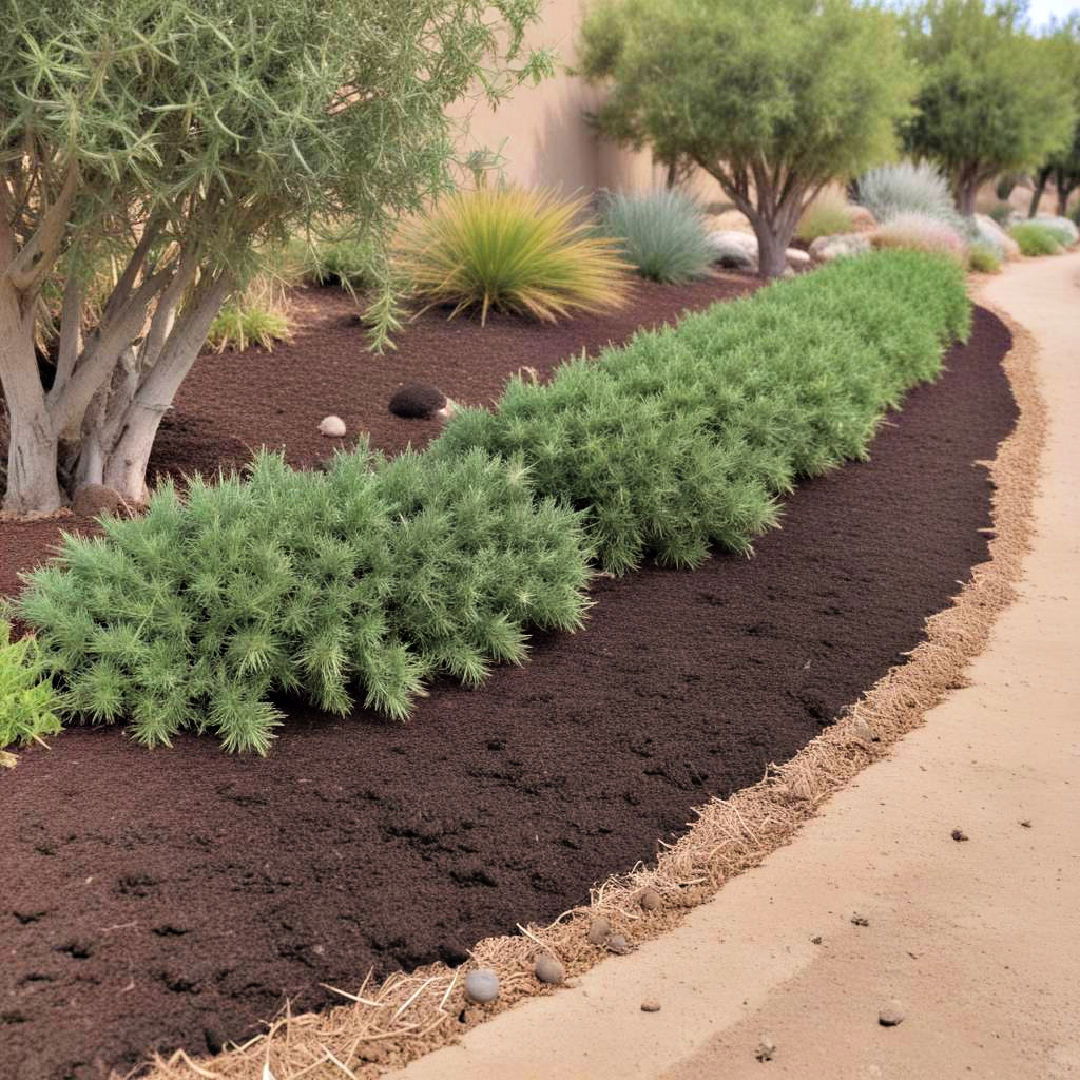
Enhance your home's curb appeal with creative front yard desert landscape ideas. Using organic mulch, such as wood chips or straw, protects soil and retains moisture, blending effortlessly with beige and white tones. This is particularly beneficial in hot climates, where evaporation is high. Mulch also suppresses weeds and decomposes slowly, providing long-term nourishment to your plants.
14. Fire Pits for Evening Gatherings
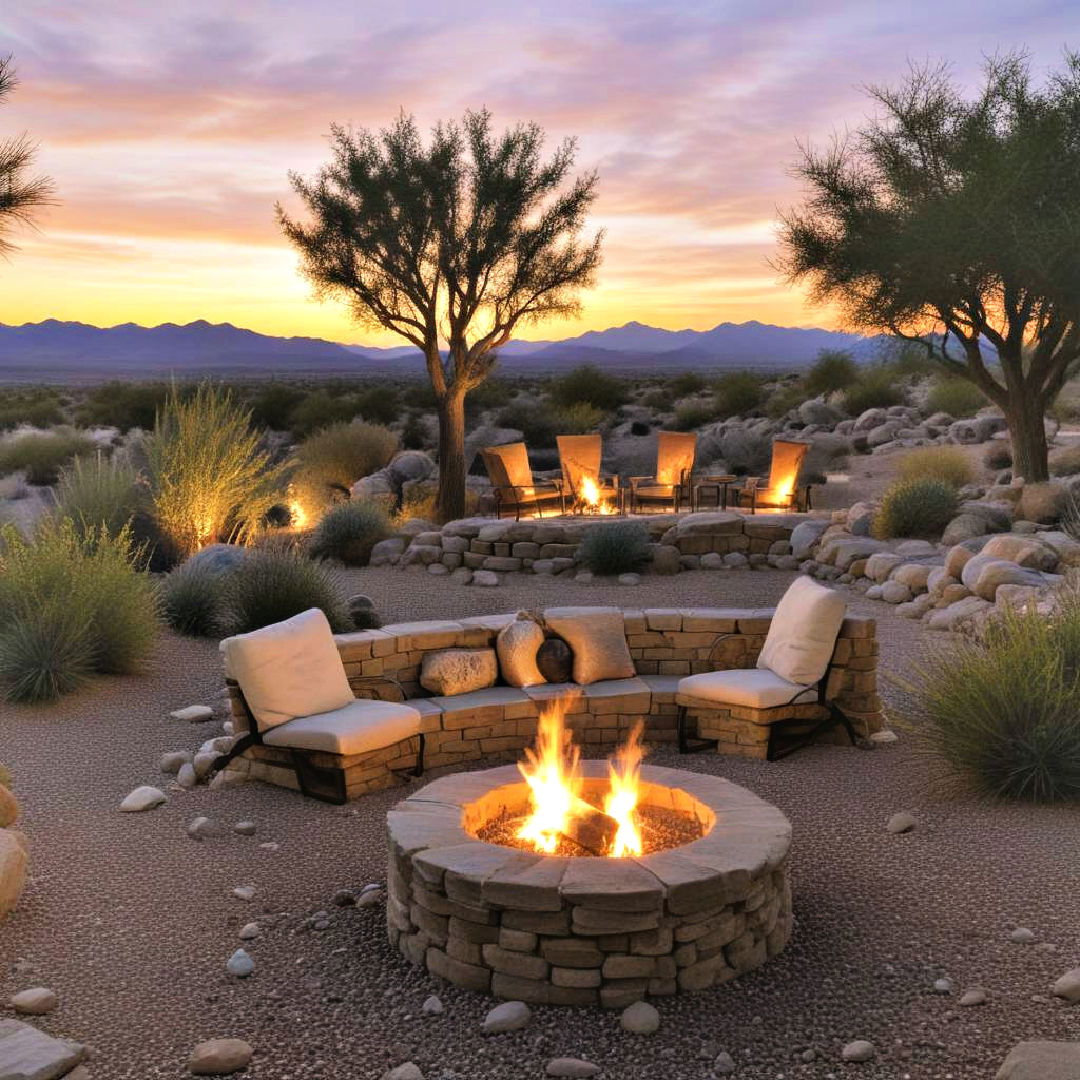
Fire pits can transform your desert landscape into an inviting evening retreat. Surrounded by seating, a fire pit provides warmth and a gathering spot. Choose materials like stone or metal for durability, ensuring it withstands extreme temperatures.
15. Boulders for Natural Focal Points

Strategically placing boulders can create impressive focal points in your desert garden, akin to the striking effect of accent walls indoors. Boulders add a rugged, natural element that blends seamlessly with the terrain. They can also serve as the basis for tiered plant arrangements, adding height and interest.
16. Outdoor Lighting for Ambiance
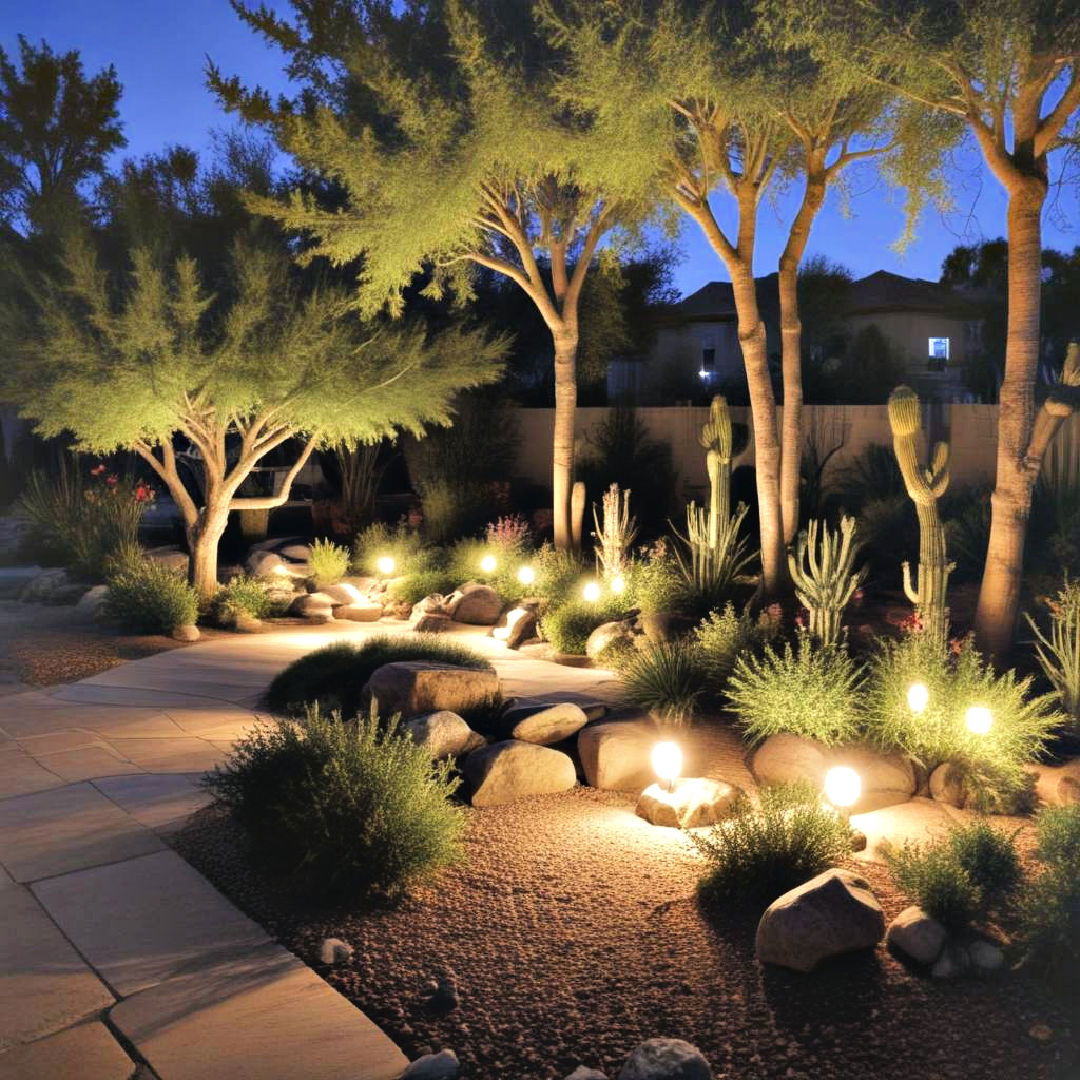
Outdoor lighting enhances the beauty and usability of your desert landscape after dark, echoing the sleek elegance of modern designs. Solar-powered lights are an excellent choice, requiring no wiring and minimal energy. Use pathway lights, uplights, and lanterns to create a warm, inviting ambiance.
17. Edible Plants for Utility
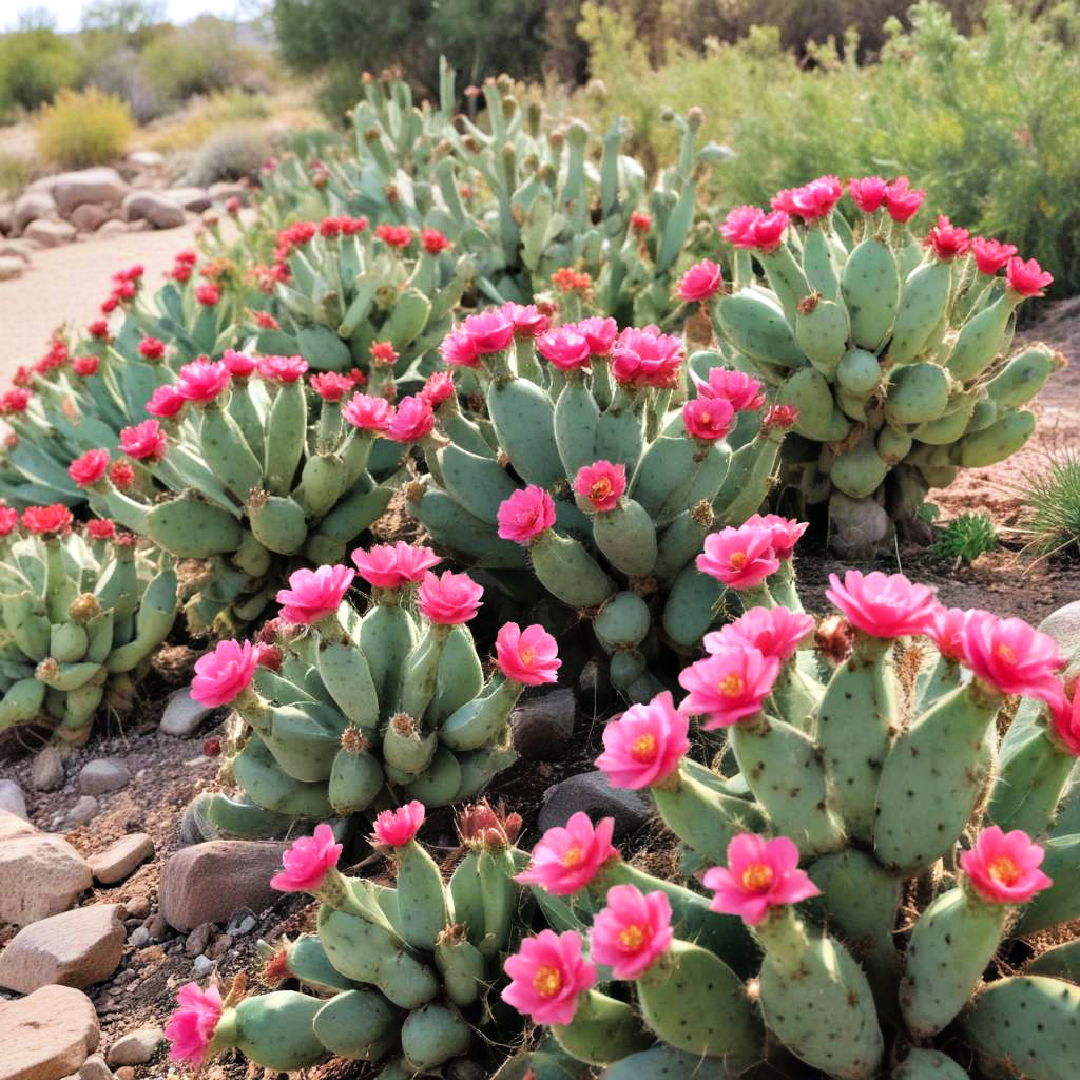
Incorporate edible plants like prickly pear cactus or pomegranates into your landscape. These plants not only thrive in desert conditions but also provide delicious, nutritious fruits. Combining aesthetics with utility, they add rich color and purpose to your garden.
18. Gravel Paths for Easy Navigation
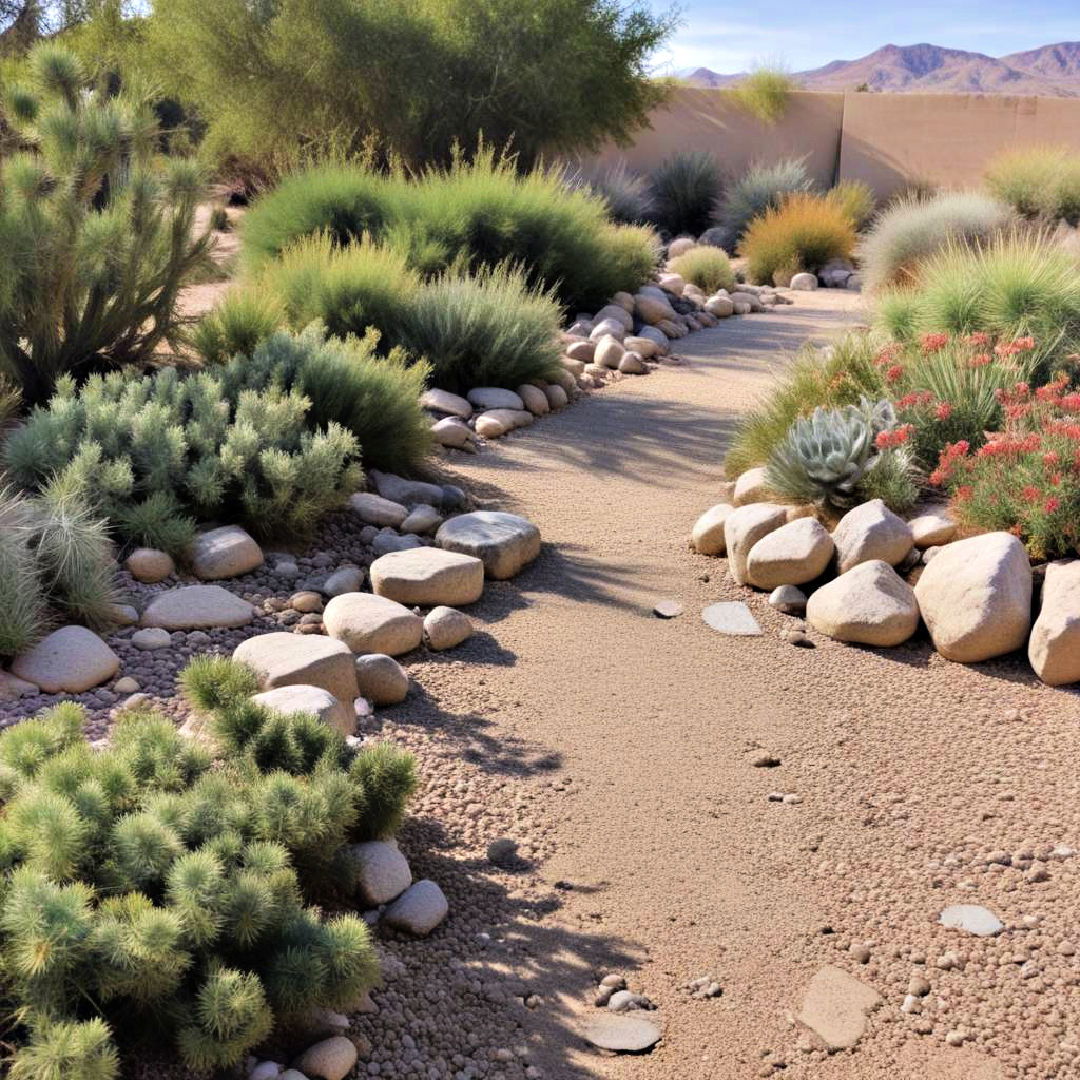
Gravel paths are both practical and beautiful in desert landscapes, much like well-thought-out wall decor enhances indoor spaces. They guide movement through the garden and define different zones. Using varied gravel colors and textures can create visually compelling patterns that seamlessly blend with the natural environment.
19. Colorful Pots for Accents
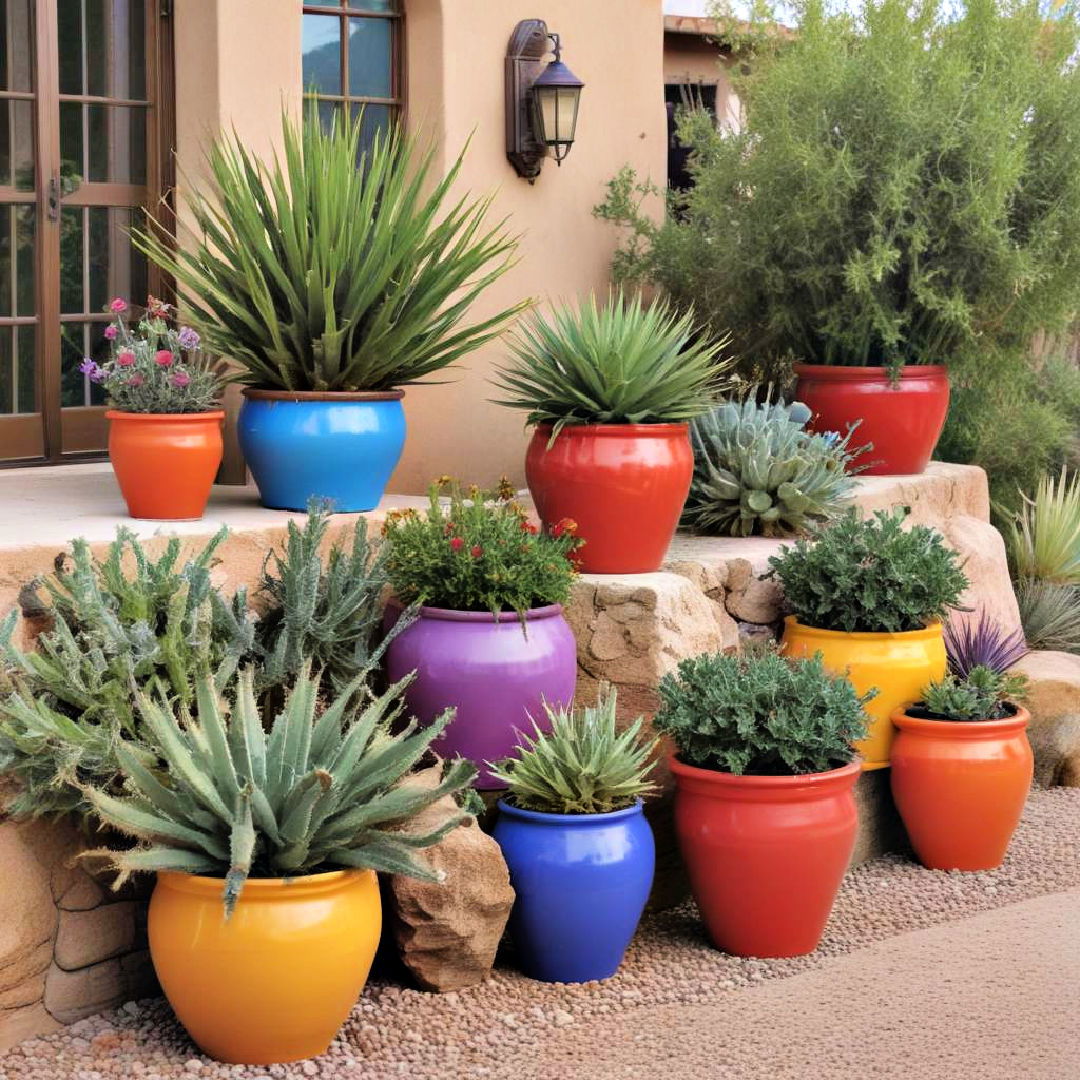
Explore breathtaking desert landscapes that showcase nature's rugged beauty. Brightly colored pots can serve as striking accents in your desert landscape, complementing vibrant pink and green combinations. Use them to house plants like succulents or cacti, adding pops of color amidst neutral tones. Pots can be rearranged easily, allowing for flexible design adjustments.
20. Desert Wildflowers for Seasonal Color
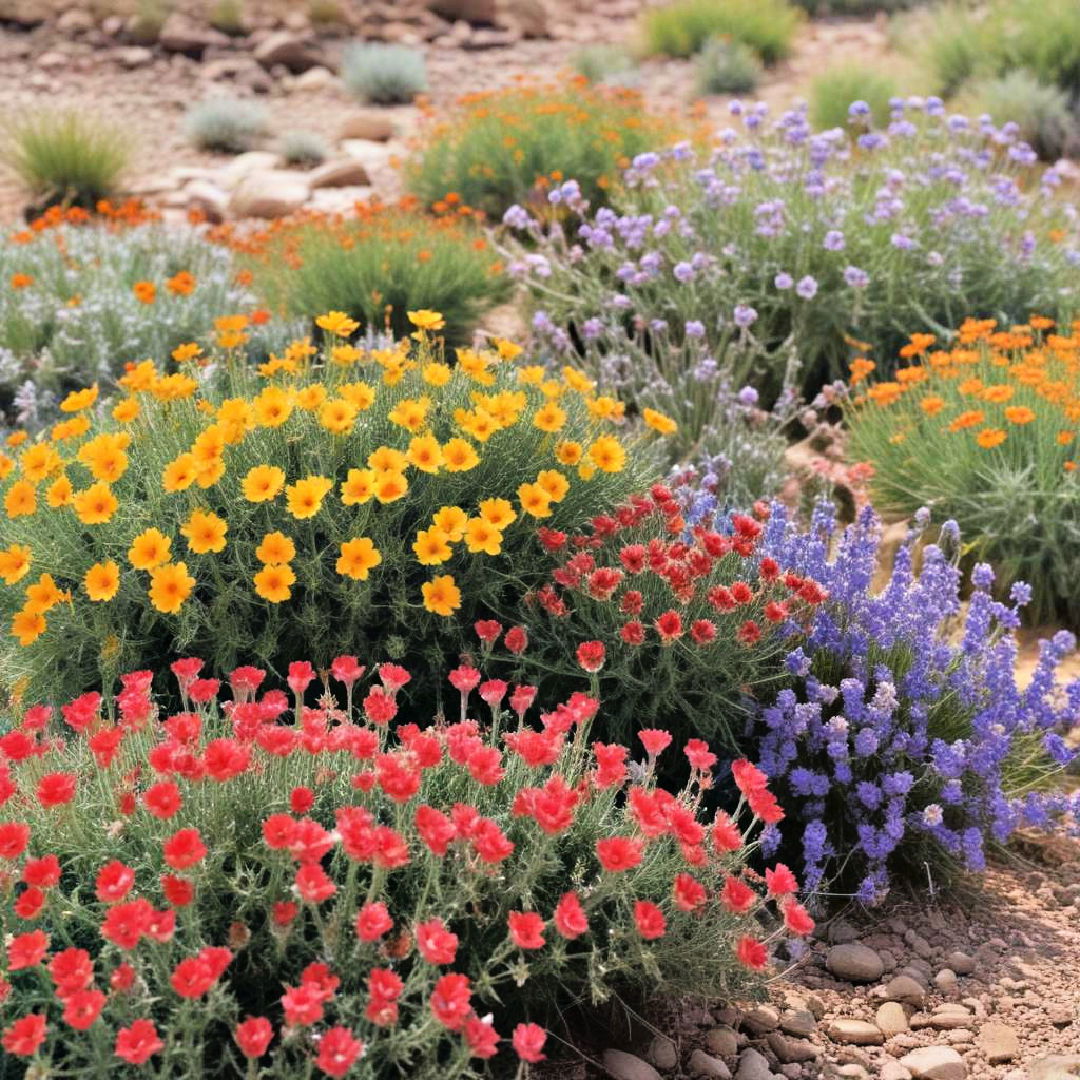
Planting desert wildflowers introduces seasonal bursts of color similar to yellow and green combinations, adding vibrancy to your landscape. Species like desert marigold and verbena are well-suited to arid conditions. These flowers not only attract pollinators but also provide a vibrant, ever-changing tapestry throughout the year.
21. Seating Areas for Relaxation
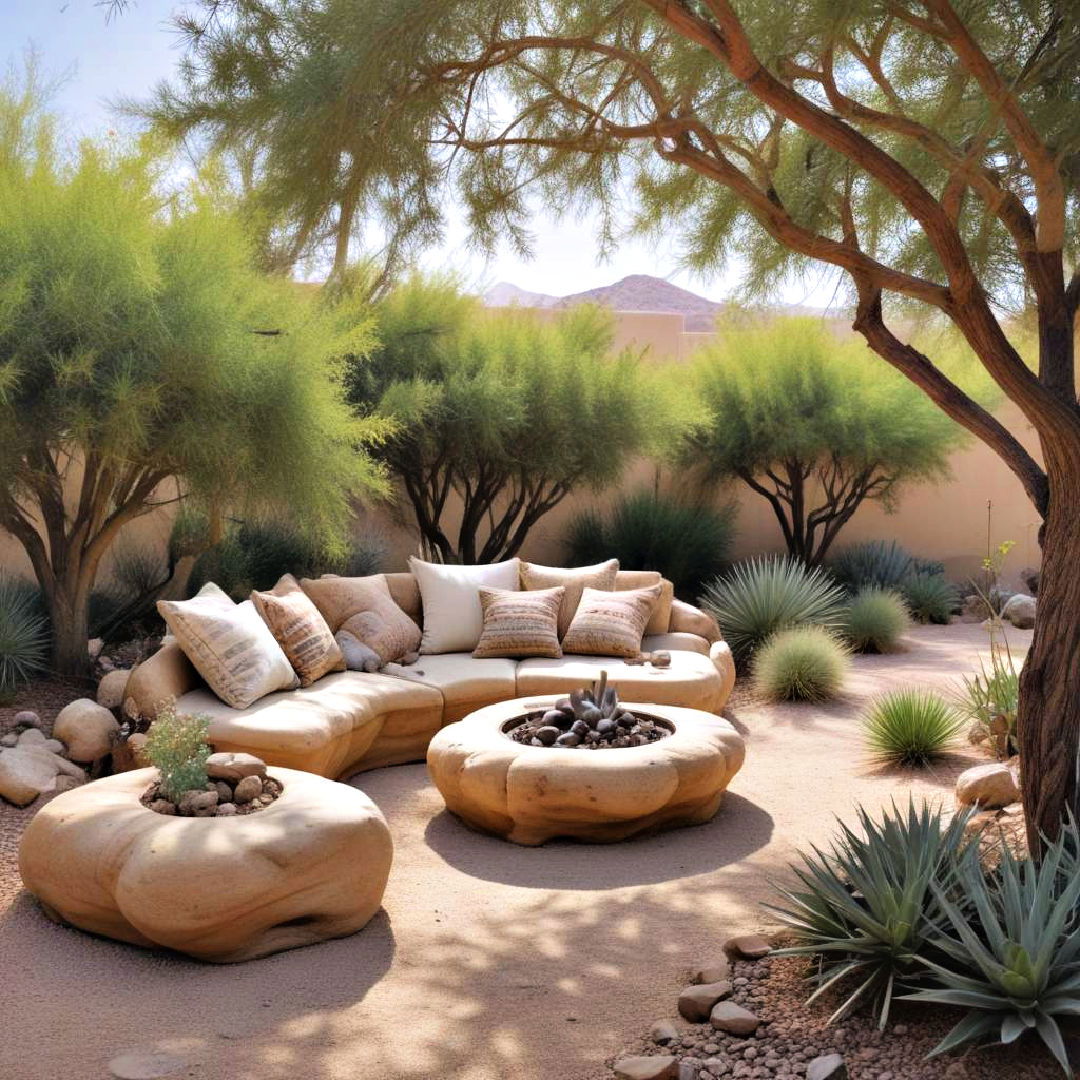
Creating shaded seating areas enhances the comfort and enjoyment of your desert garden, offering a cozy and inviting atmosphere. Use materials like stone benches or weather-resistant furniture. Positioning these areas near focal points or lush greenery makes for inviting, tranquil spots to unwind.
22. Terracotta Planters for Rustic Charm
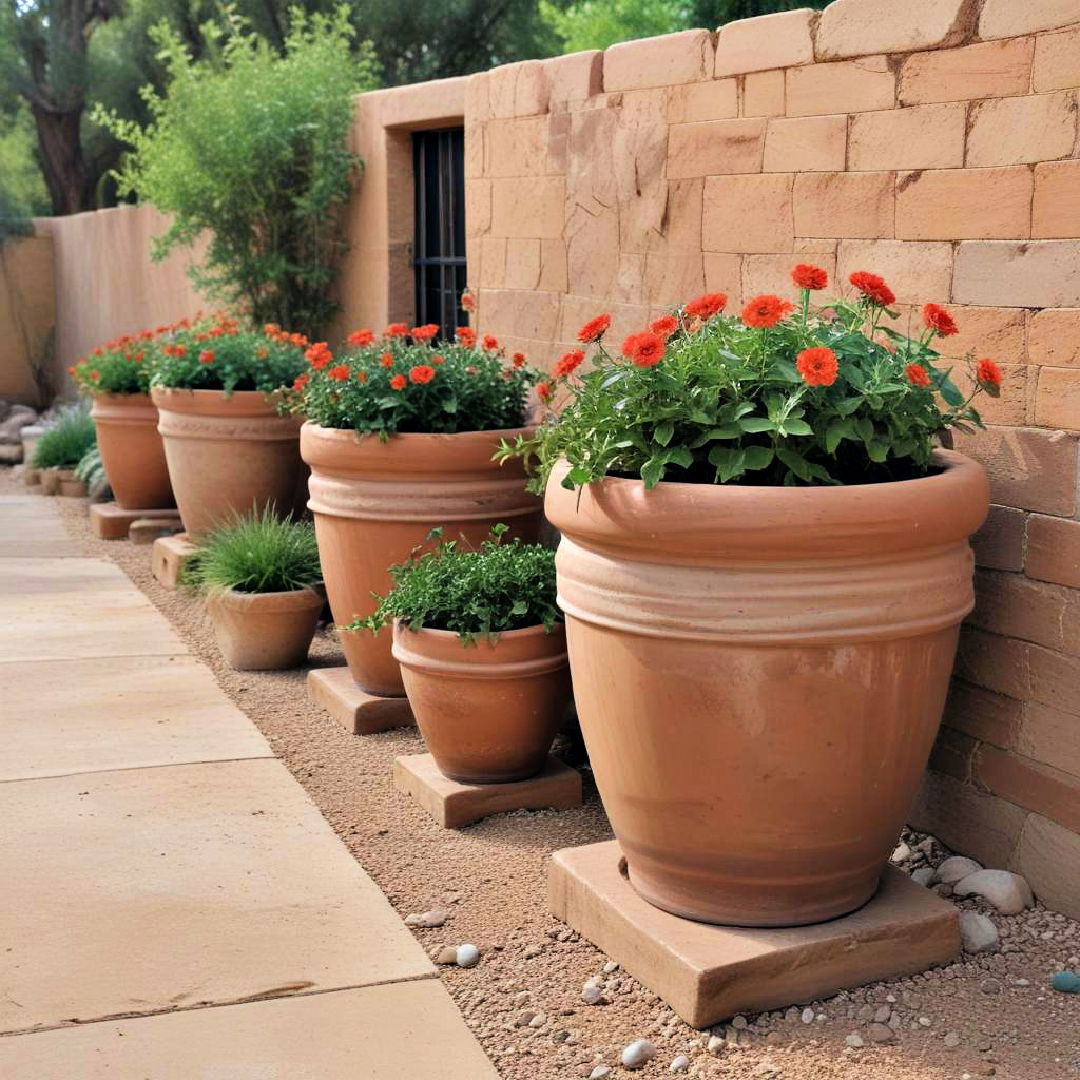
Terracotta planters add a timeless, rustic touch to your landscape. Their earthy tones and porous nature make them suitable for desert climates. These planters help maintain proper soil moisture levels, and they beautifully complement succulents and other arid-loving plants.
23. Desert Trees for Shade
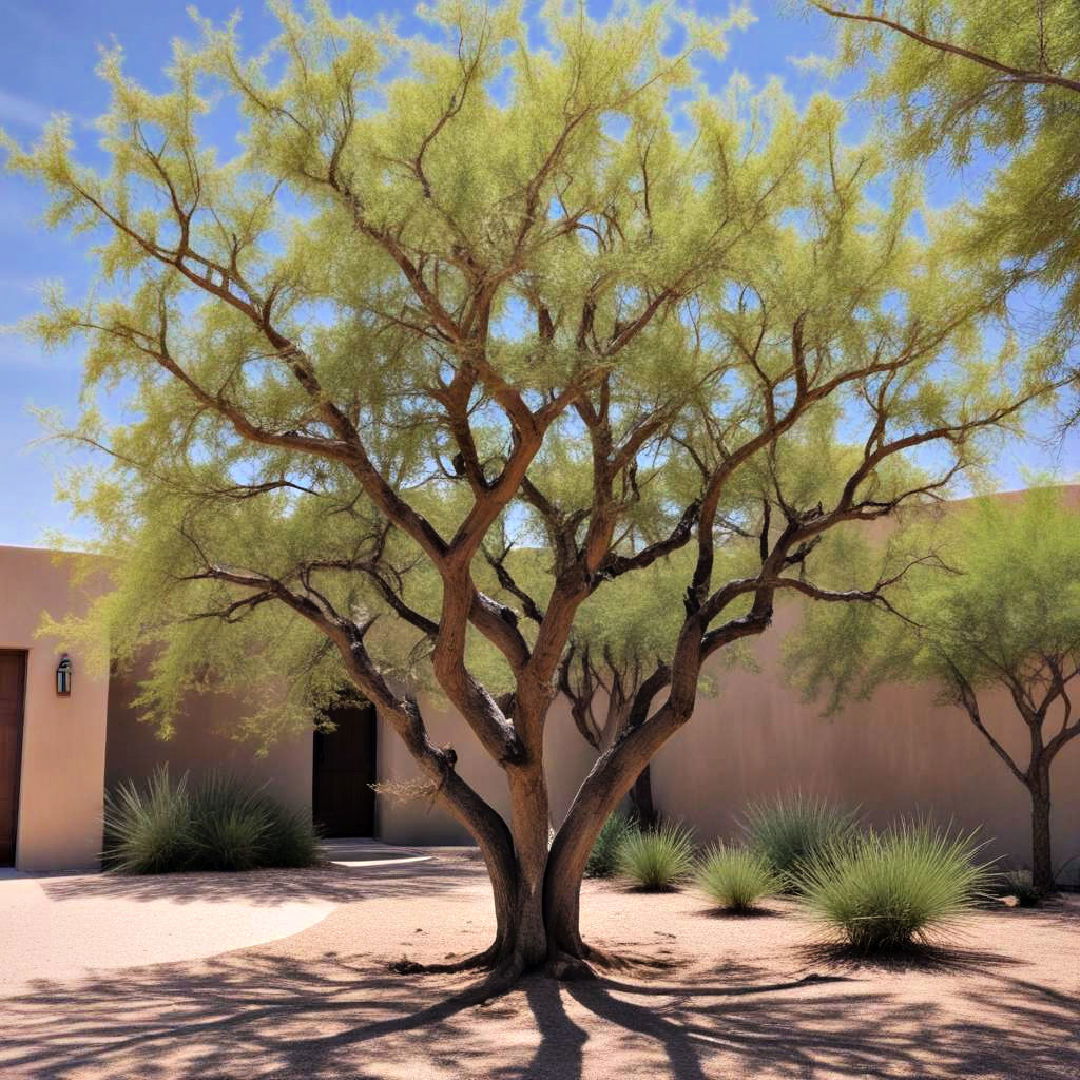
Planting desert-adapted trees like mesquite or palo verde offers much-needed shade, echoing the rich elegance of emerald green tones. These trees are drought-tolerant and provide a canopy that cools the surrounding area. Their unique forms and seasonal blooms add beauty and functionality to your garden.
24. Reclaimed Wood for Eco-Friendly Design
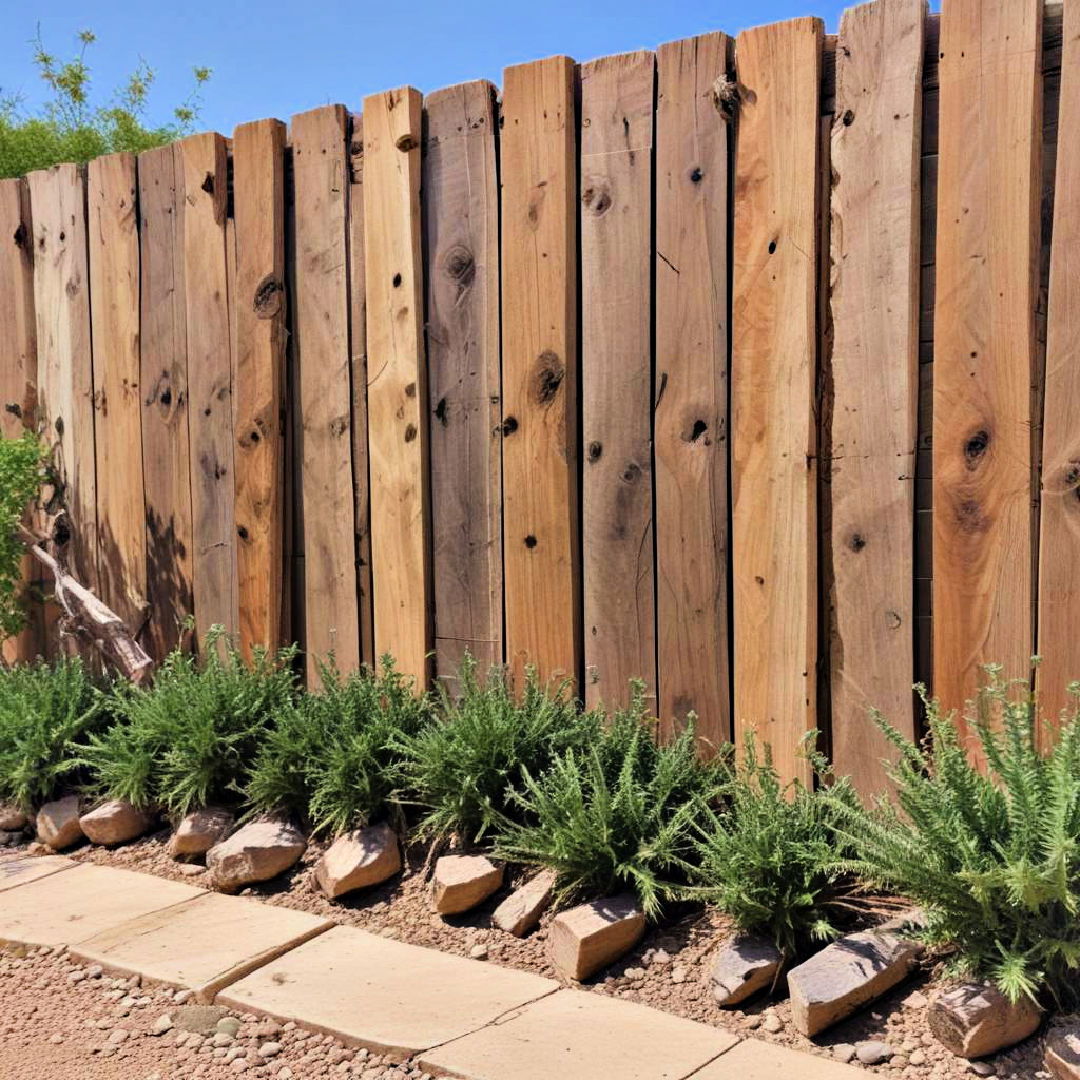
Utilizing reclaimed wood in your desert landscaping projects adds an eco-friendly, rustic aesthetic. Whether used for raised beds, pathways, or garden furniture, this material is sustainable and durable. Reclaimed wood brings warmth and character, blending seamlessly with natural elements.
25. Drip Irrigation for Efficiency

Drip irrigation systems are ideal for conserving water in desert landscapes. These systems deliver water directly to the plant roots, minimizing wastage. This method ensures that each plant receives adequate hydration while reducing evaporation and runoff, making it a highly efficient watering solution.
Conclusion:
Creating a desert landscape that's both beautiful and sustainable is all about making thoughtful choices. By using native plants, efficient drip irrigation, and artistic elements like metal sculptures and terracotta planters, you can design a yard that stands out for its beauty and practicality. Incorporating features like fire pits, desert wildflowers, and shade structures not only enhances your outdoor space but also boosts its functionality year-round. With these 25 desert landscaping ideas, you'll transform your yard into a breathtaking oasis that's easy to maintain, eco-friendly, and uniquely yours.
Key Points:
- Native Plants: Use plants that naturally thrive in desert conditions to reduce water usage and maintenance.
- Rock Gardens & Xeriscaping: Implement rock gardens and xeriscaping techniques to create visually appealing, low-maintenance landscapes.
- Succulents & Desert Grasses: Incorporate succulents and grasses for added texture and variety in your garden.
- Functional Elements: Features like water features, fire pits, and shade structures enhance both the aesthetic and usability of your outdoor space.
- Artistic Touches: Add artistic pathways, metal sculptures, and colorful pots for a unique and personalized touch.
- Soil and Water Management: Utilize mulching, raised beds, and drip irrigation for efficient soil care and water conservation.
- Lighting & Ambiance: Outdoor lighting and seating areas create a warm, inviting atmosphere for evening relaxation.
What to Do Next:
- Assess your outdoor space and decide which desert-friendly plants and hardscape features fit your needs.
- Begin with a plan to introduce water-saving techniques like drip irrigation and xeriscaping.
- Add personalized touches like sculptures, fire pits, or seating areas to enhance both functionality and visual appeal.
- Consider the practical use of elements like mulch and decorative gravel for soil protection and ground cover.
- Experiment with color and texture through wildflowers, succulents, and artistic elements to make your landscape uniquely yours.

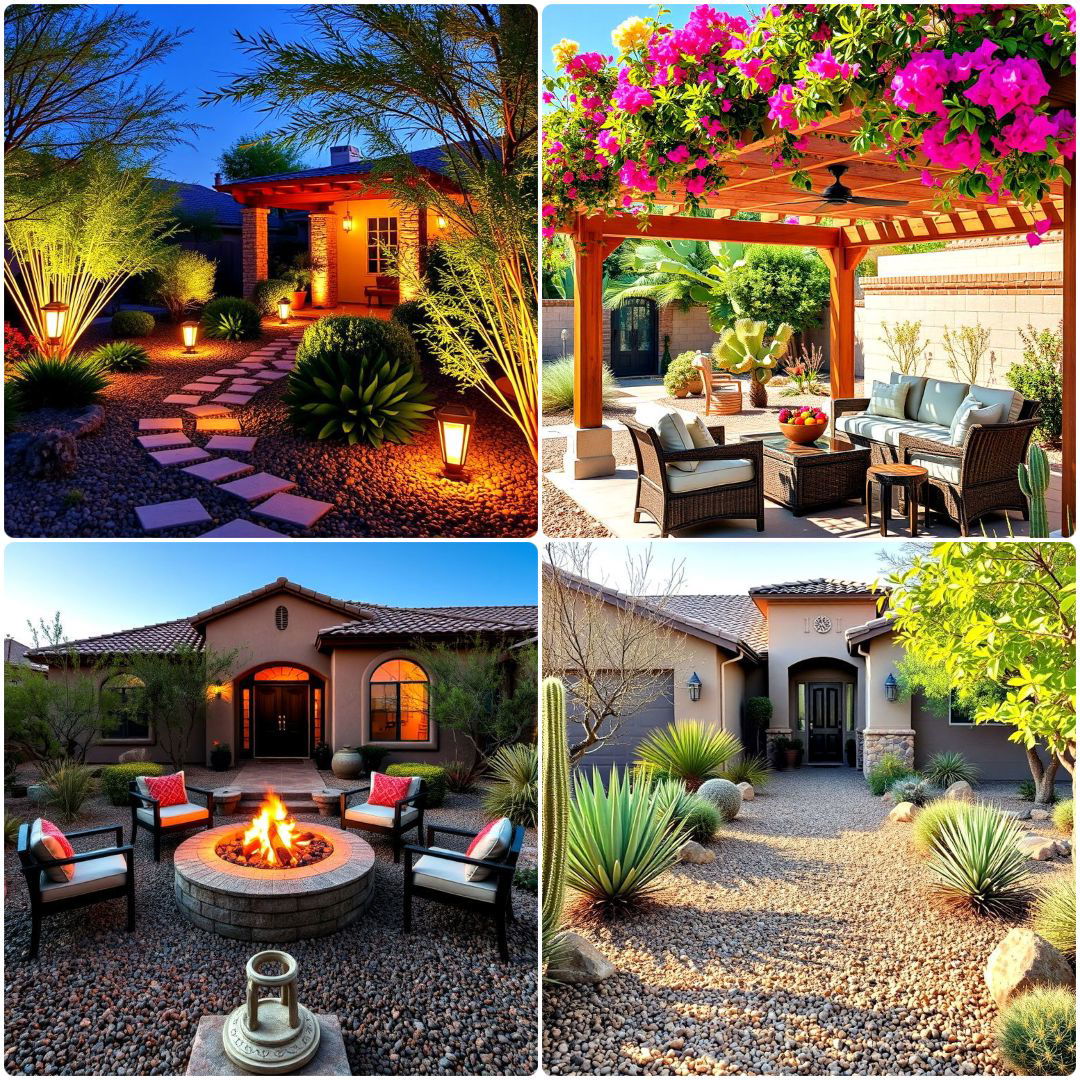
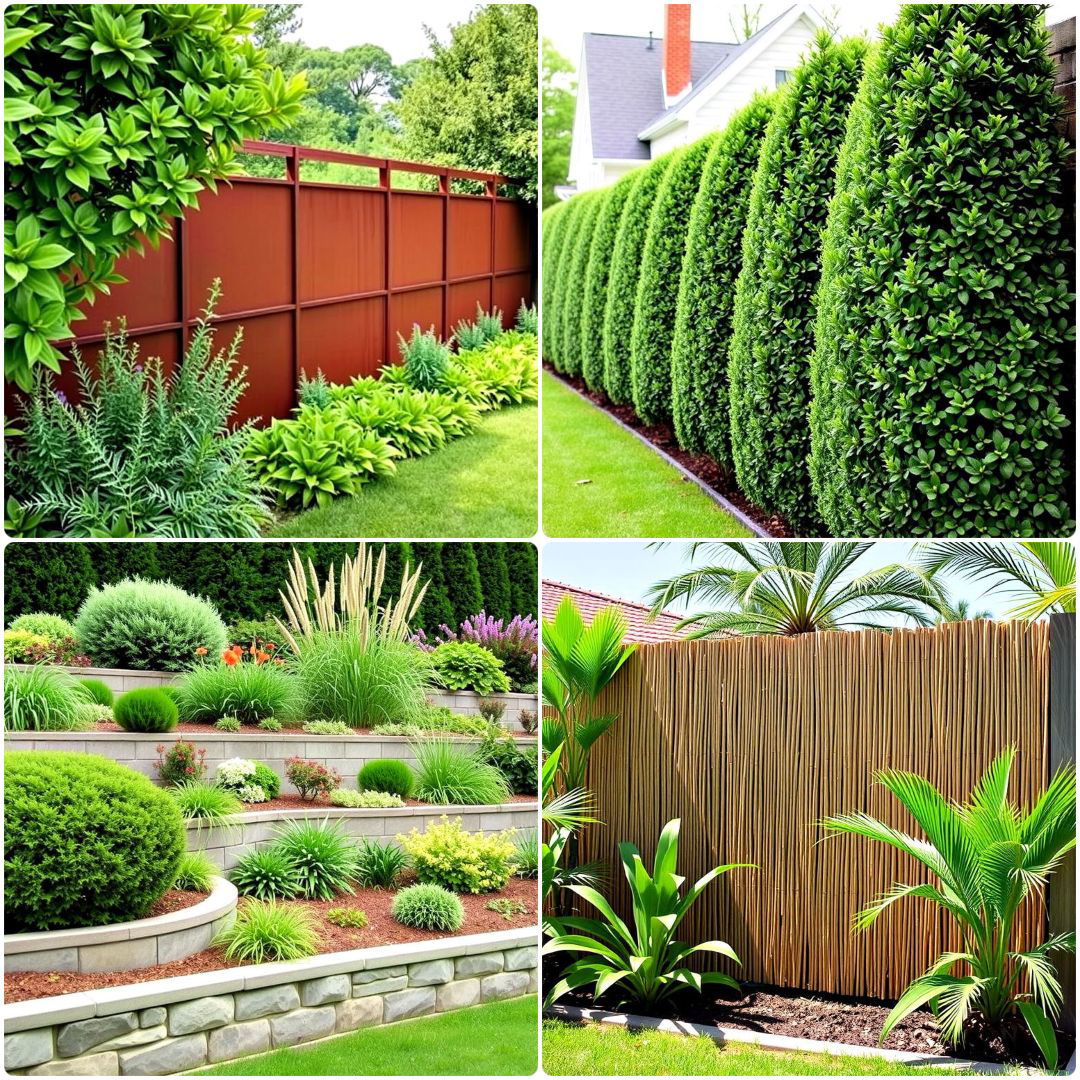
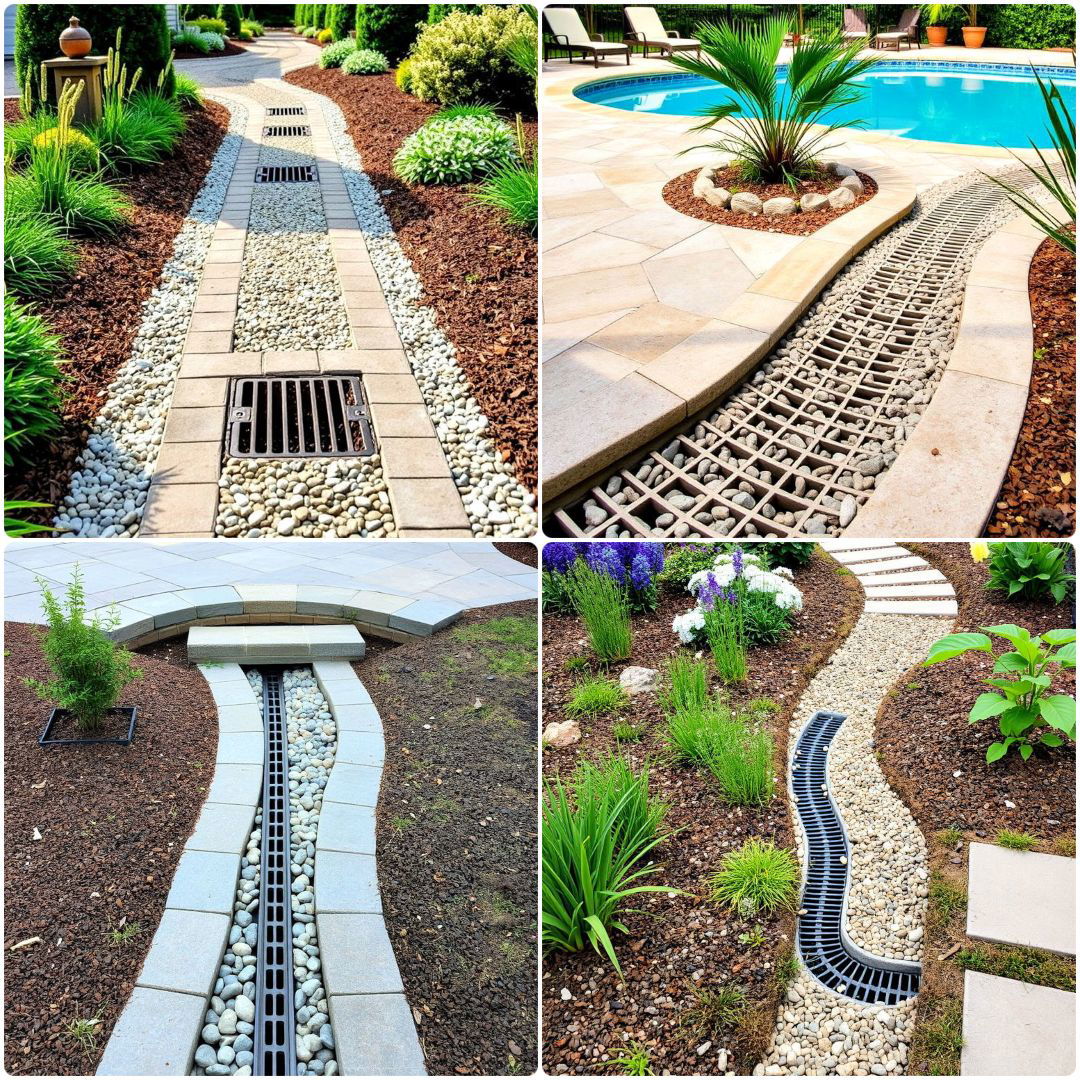
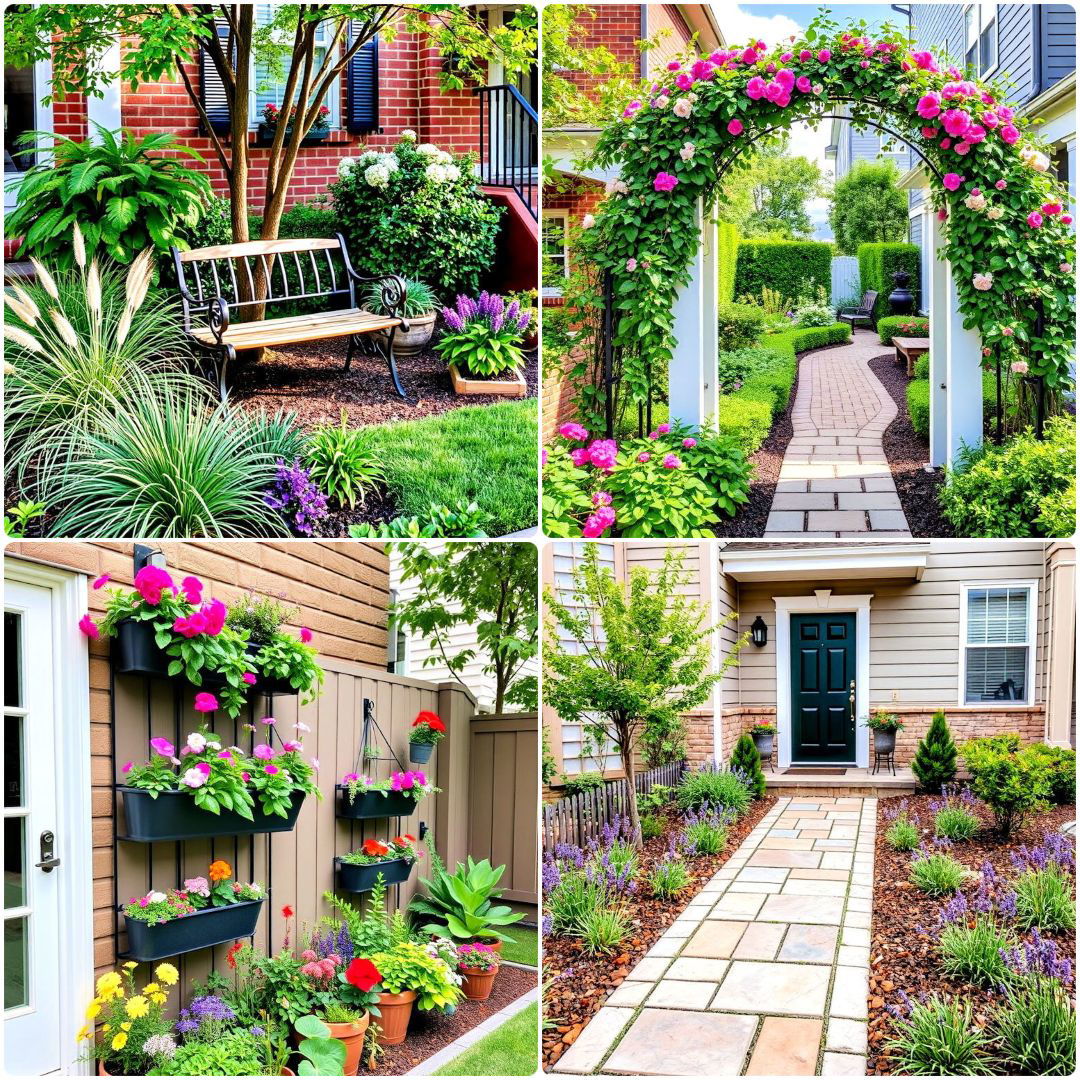
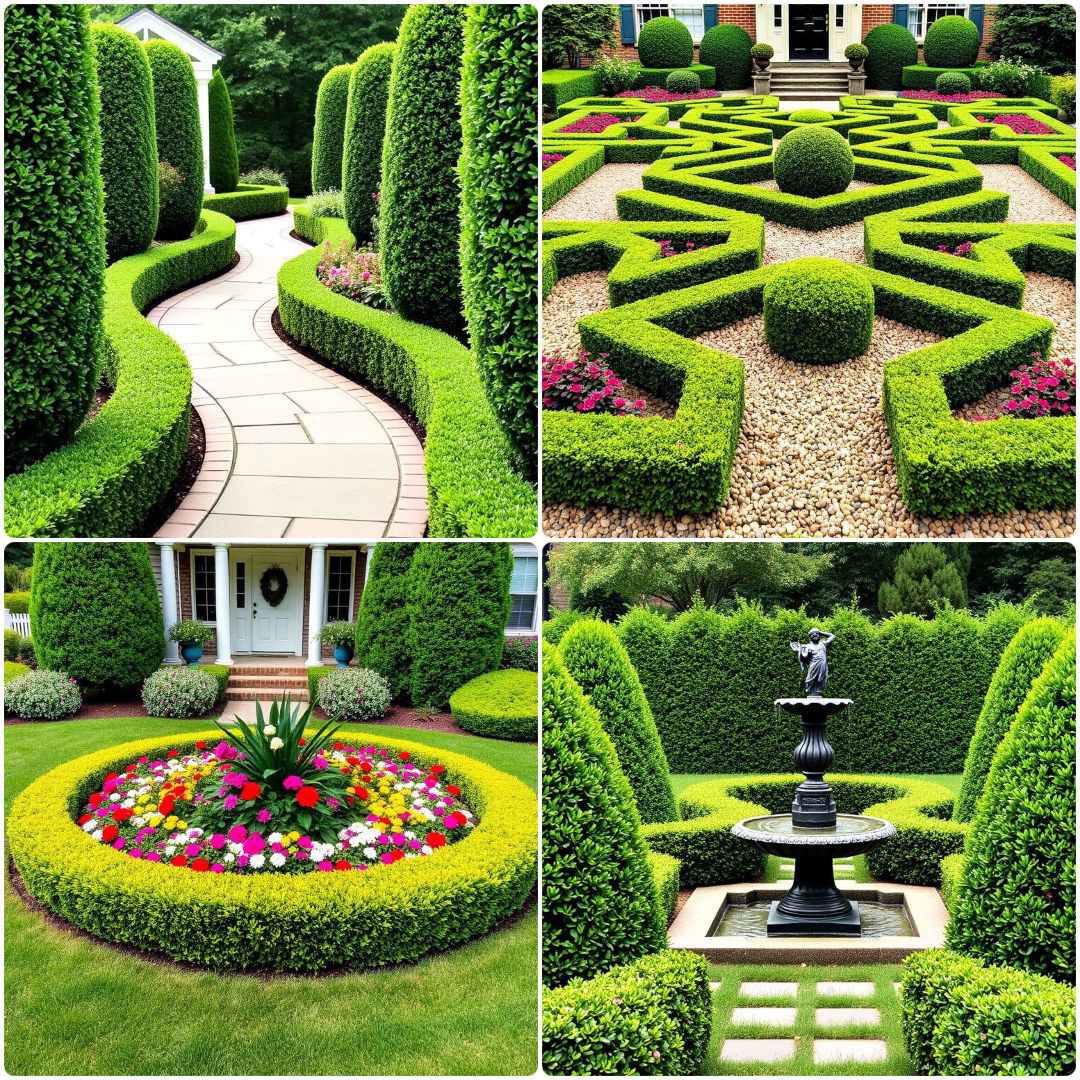

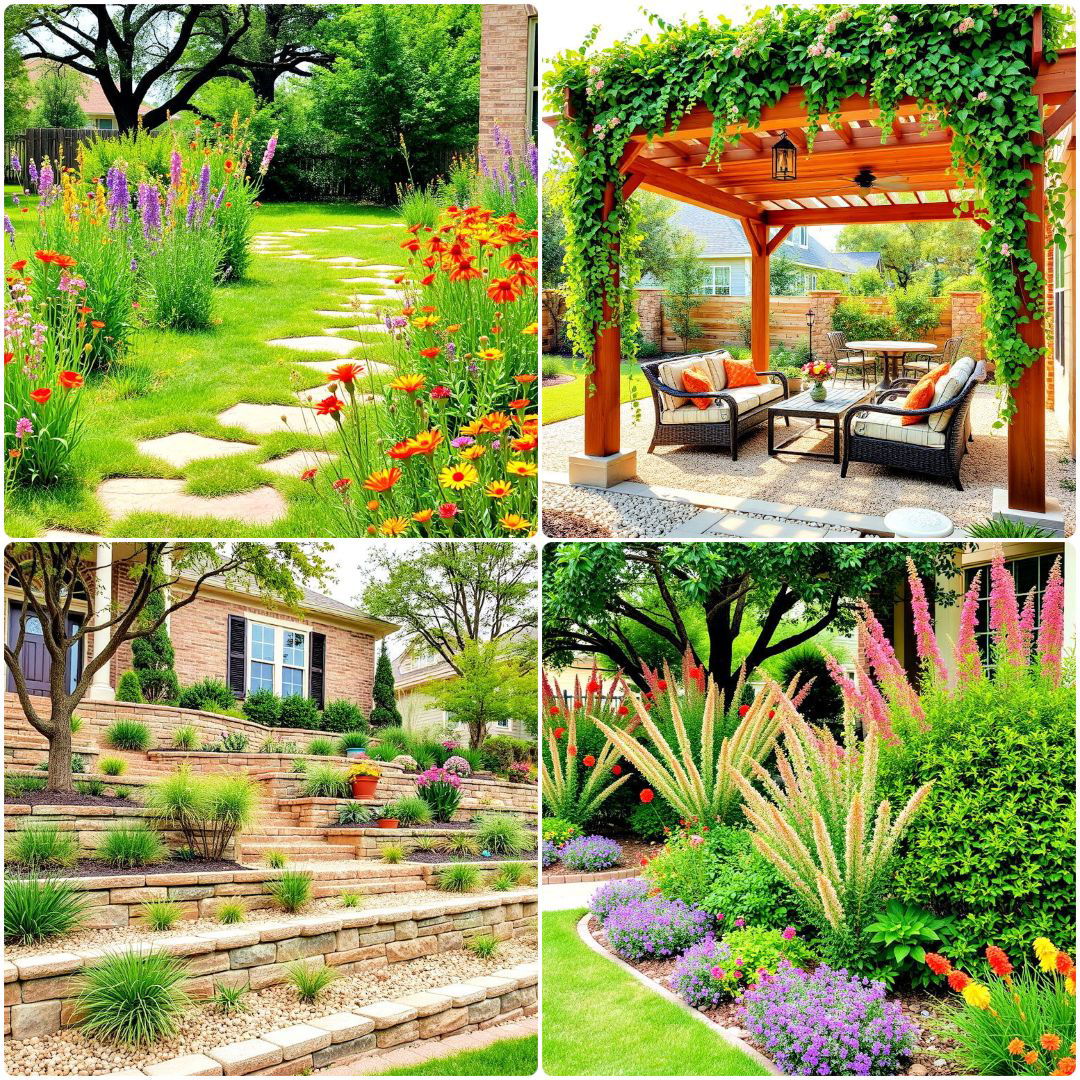
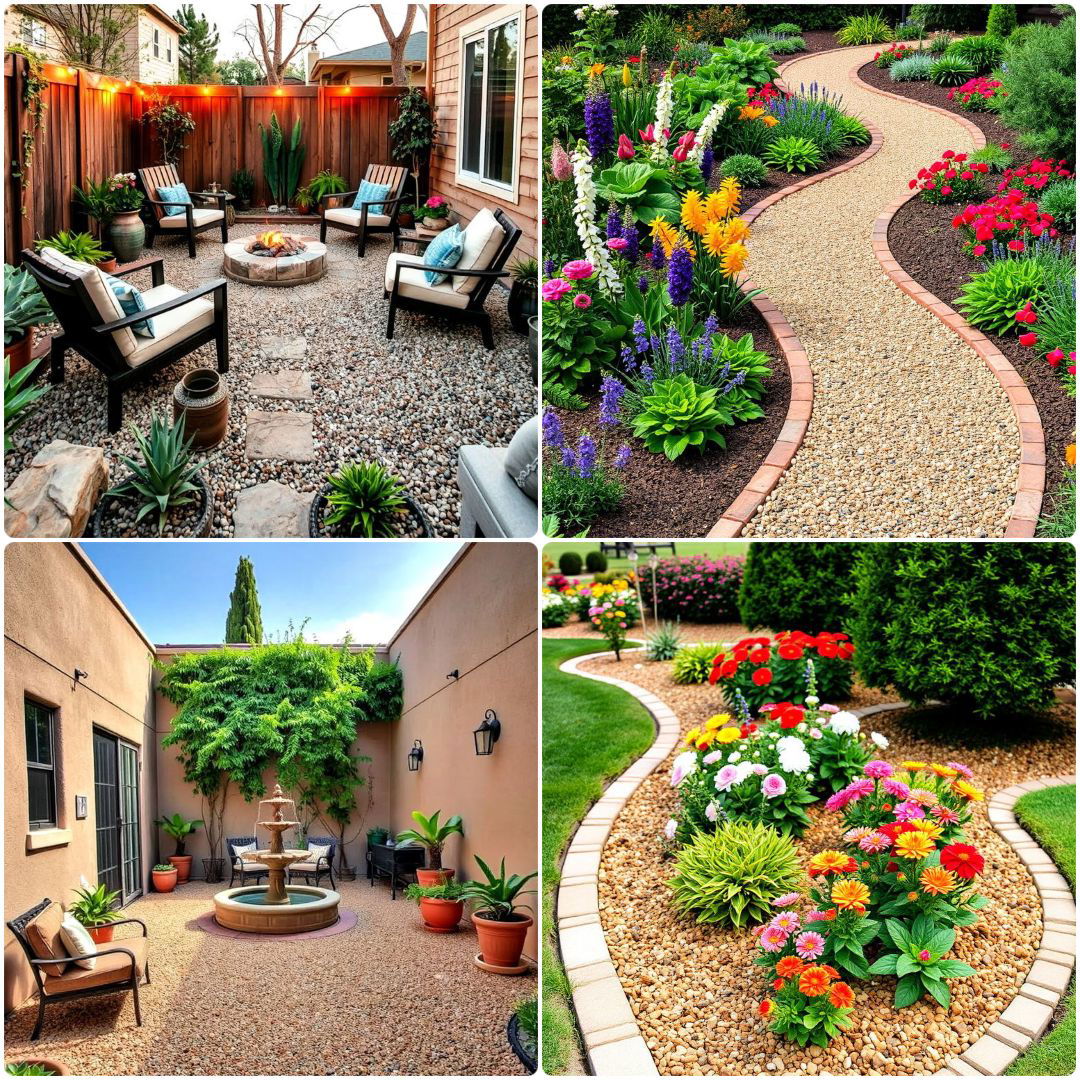
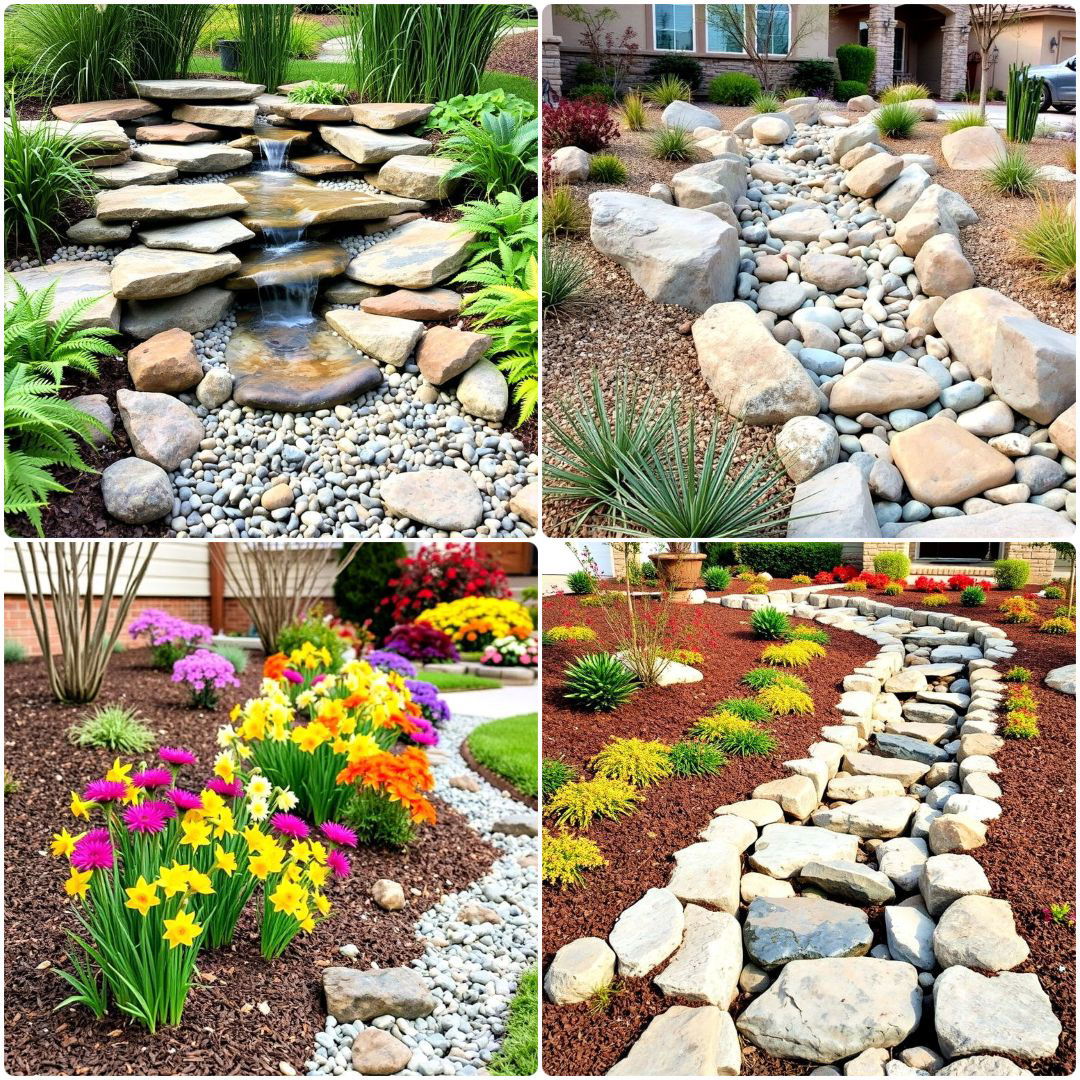
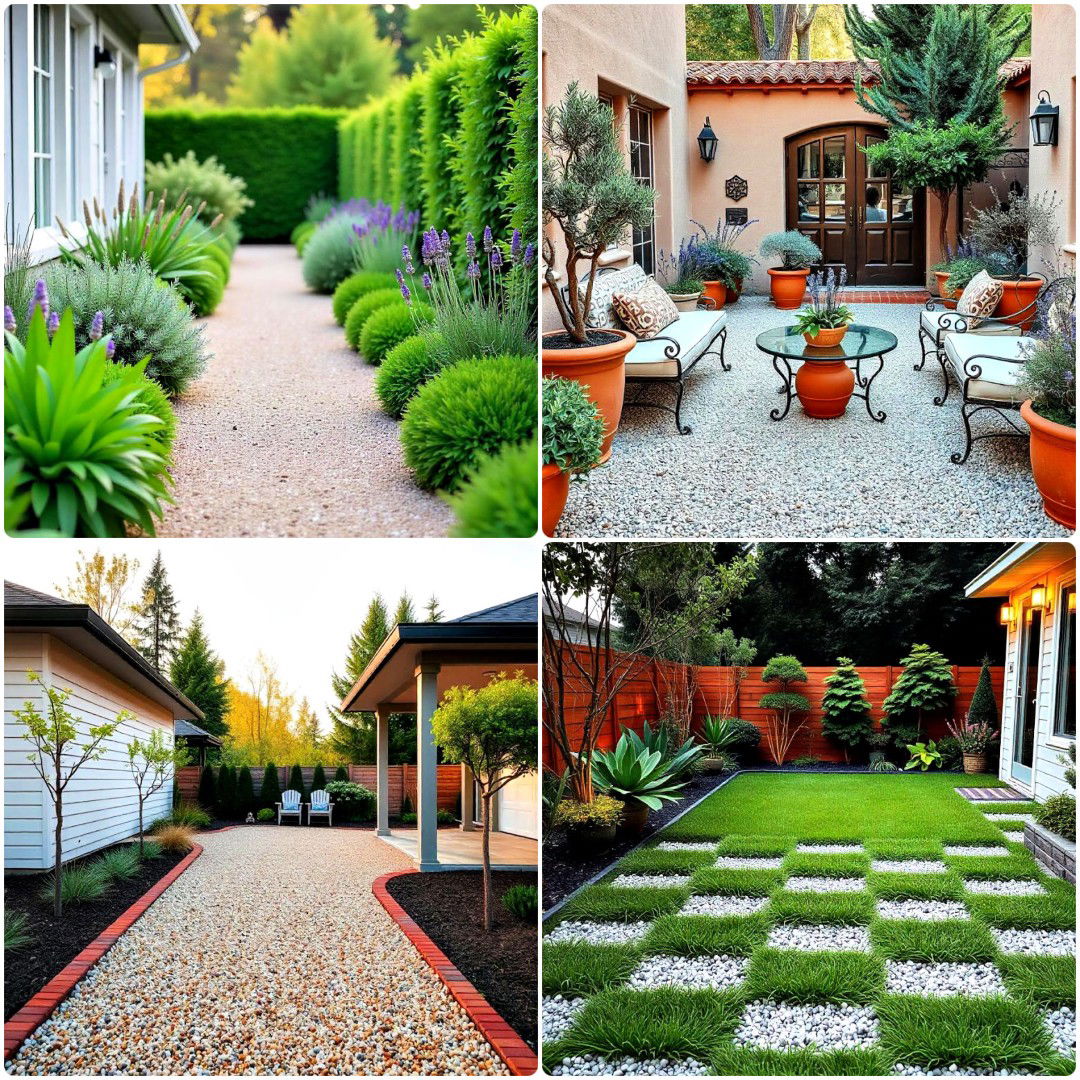
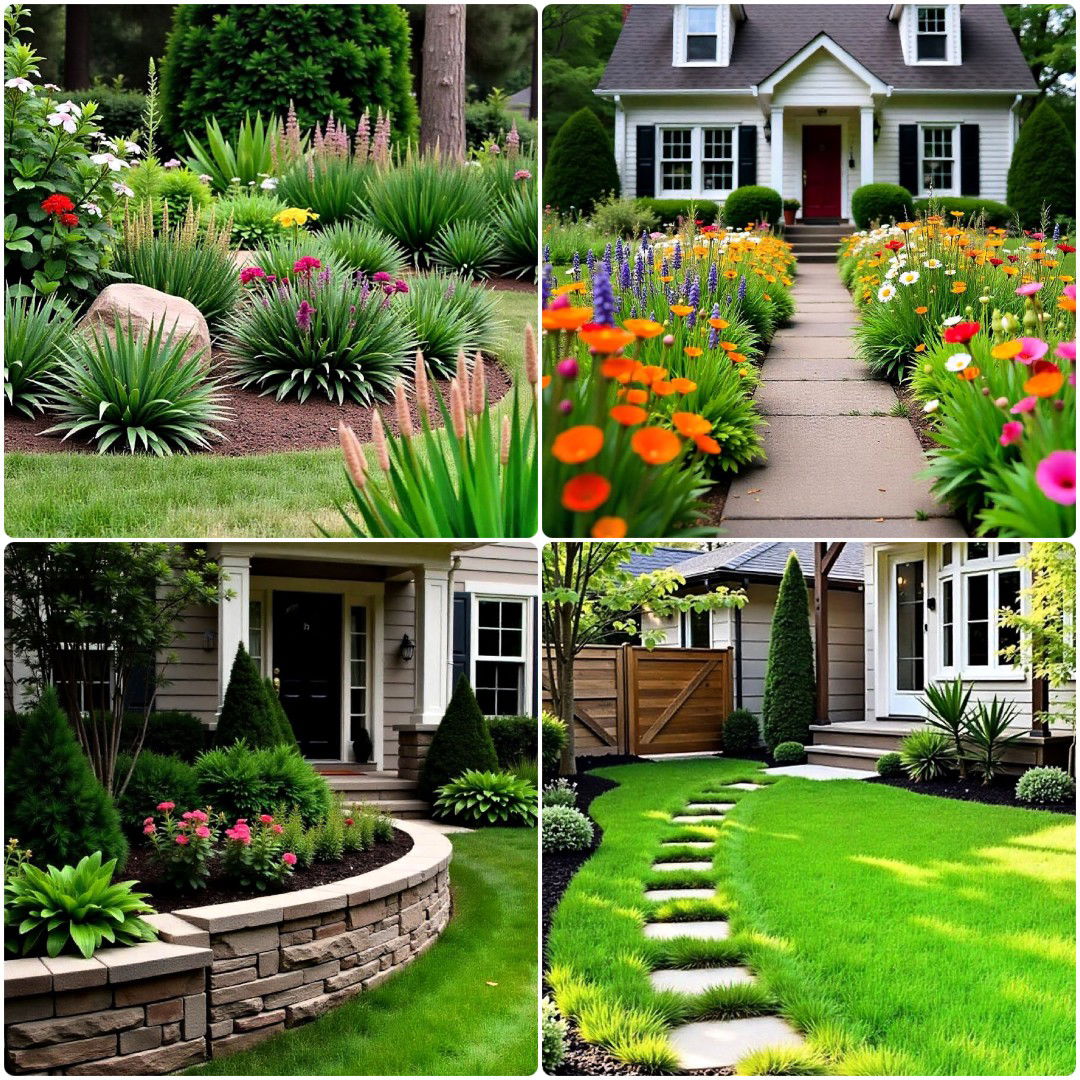
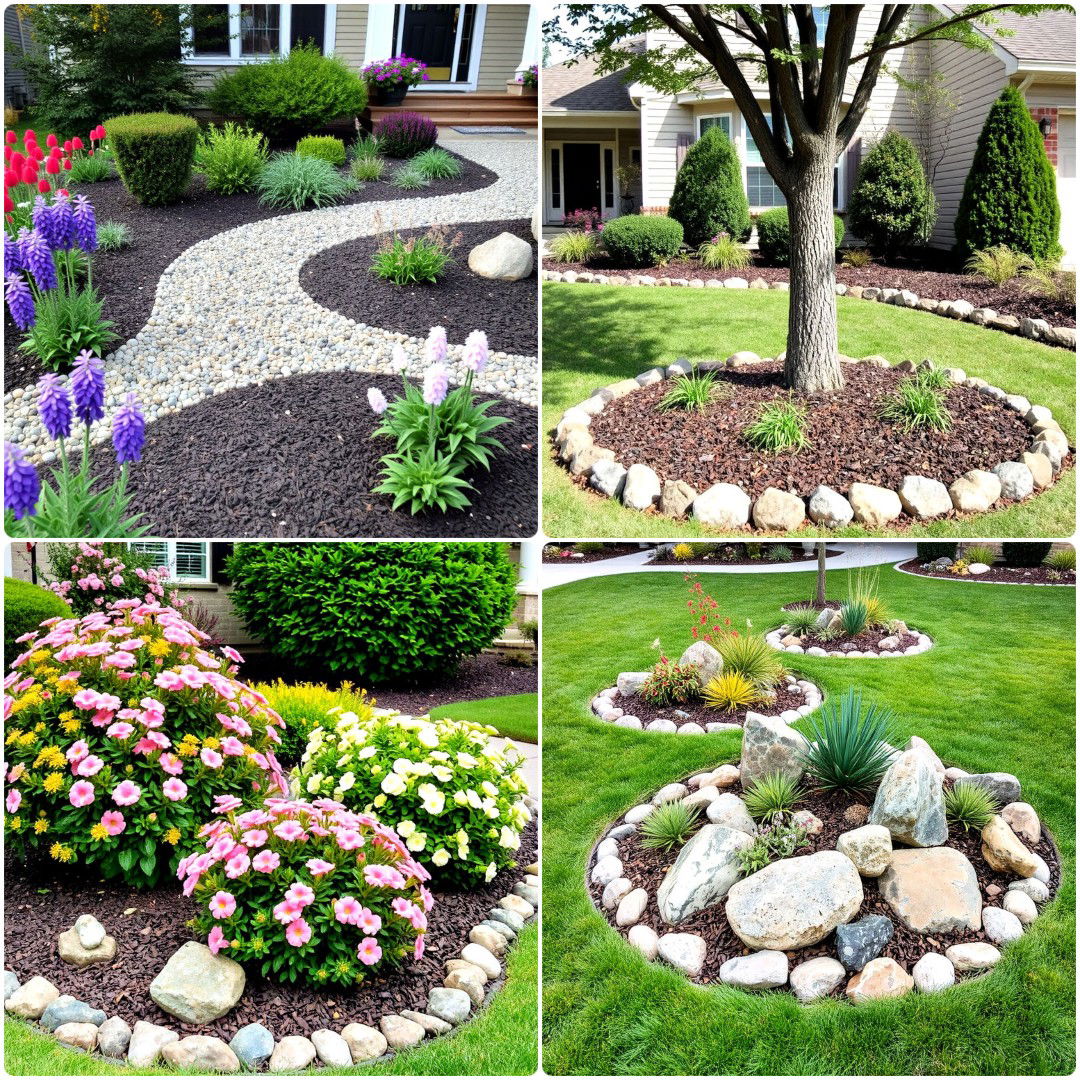
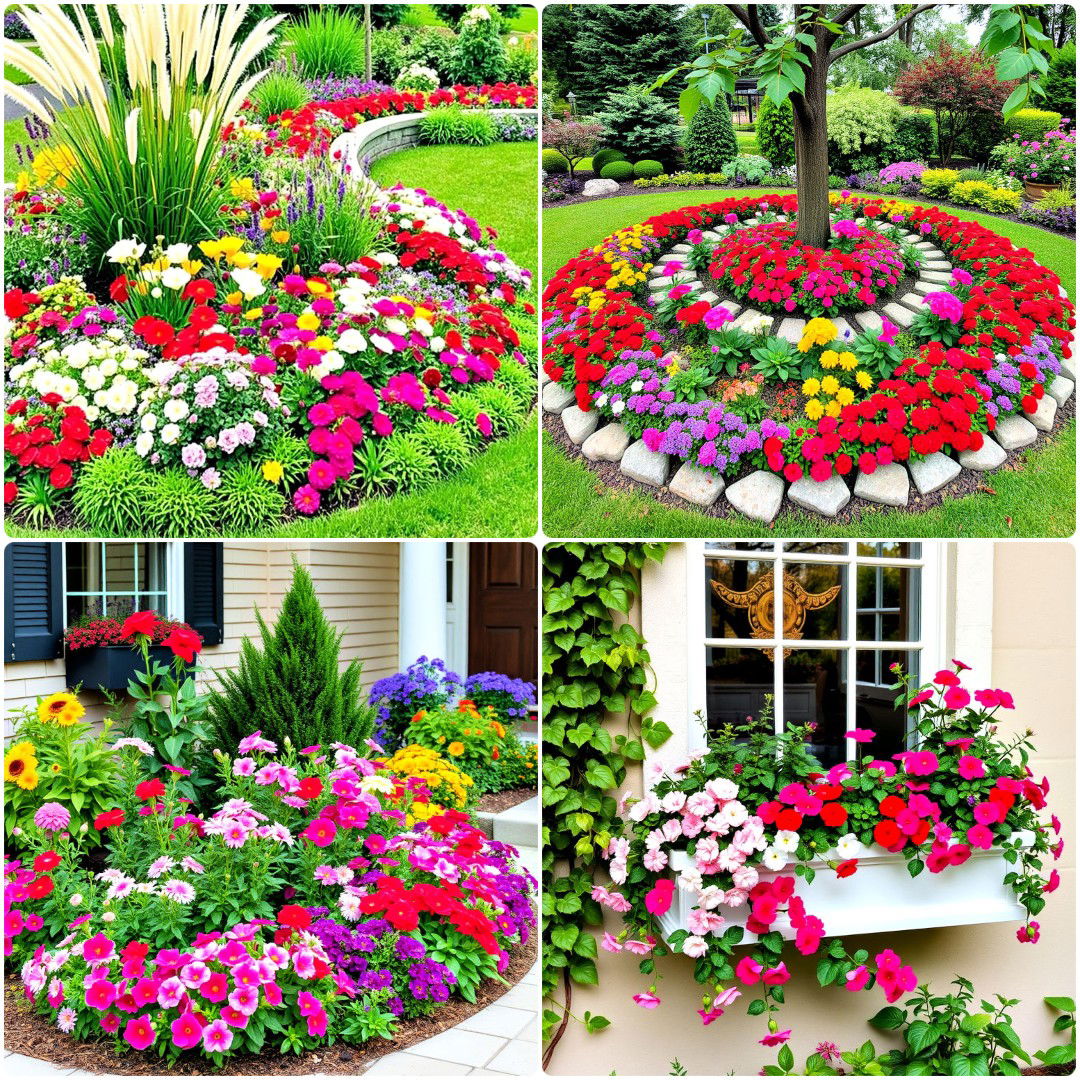
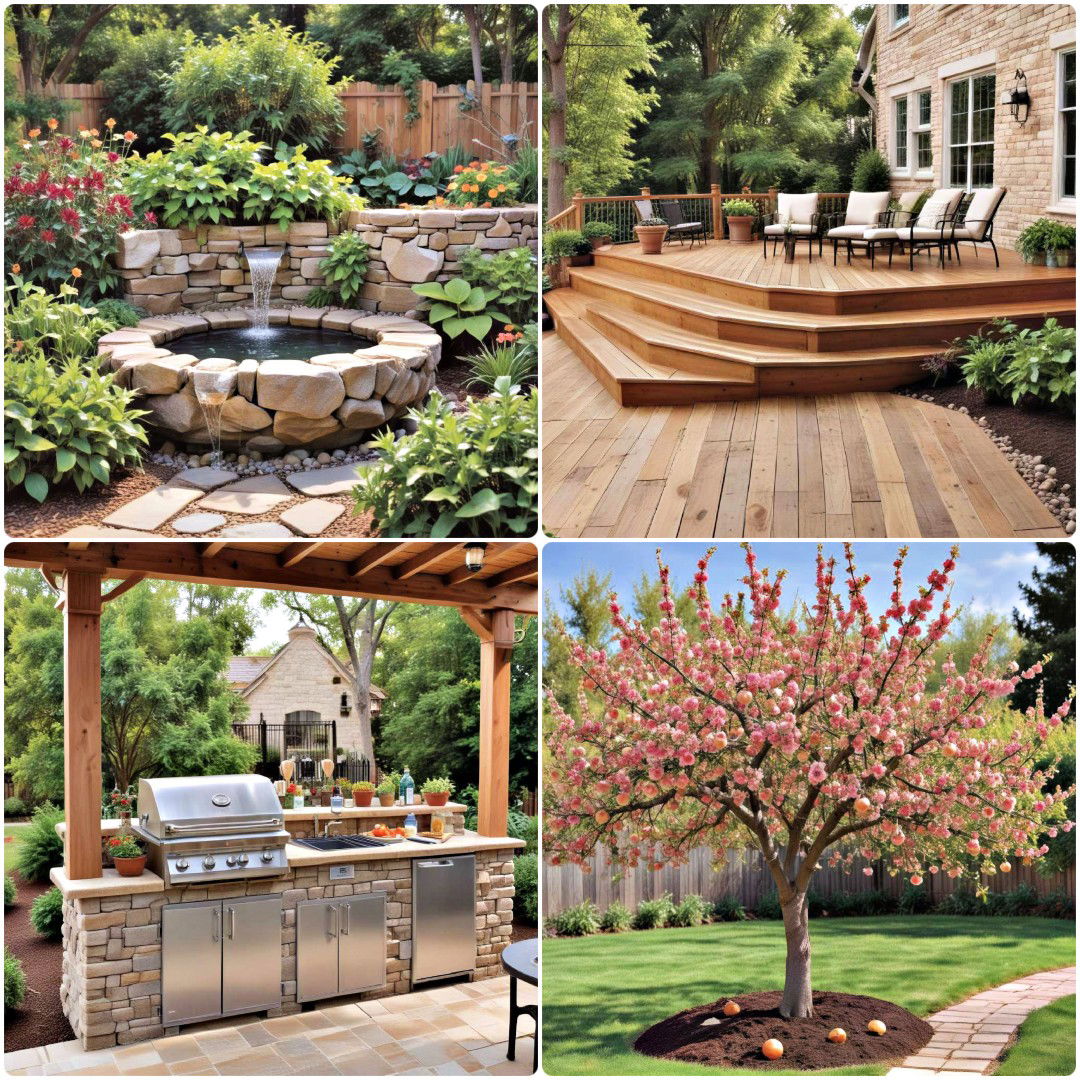
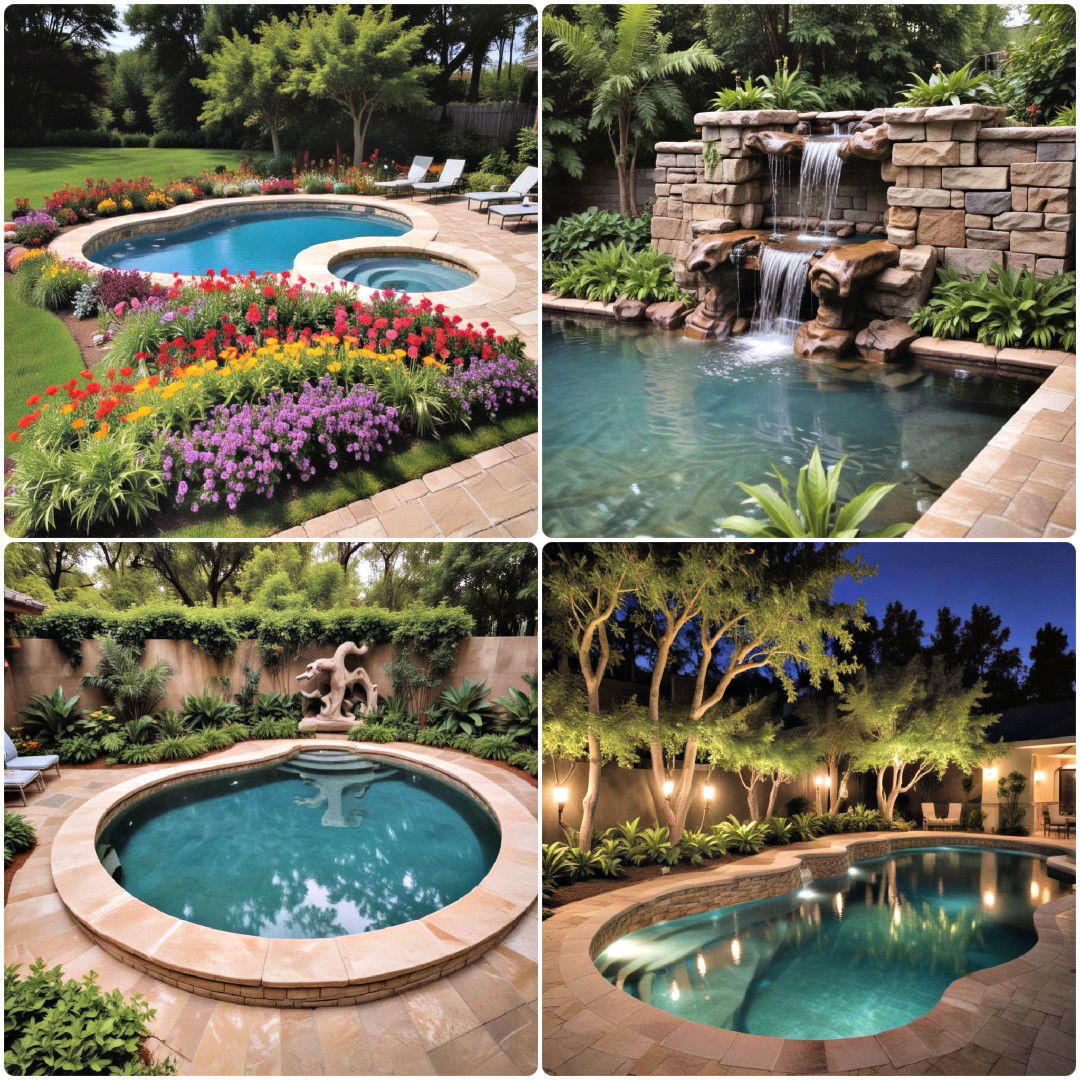
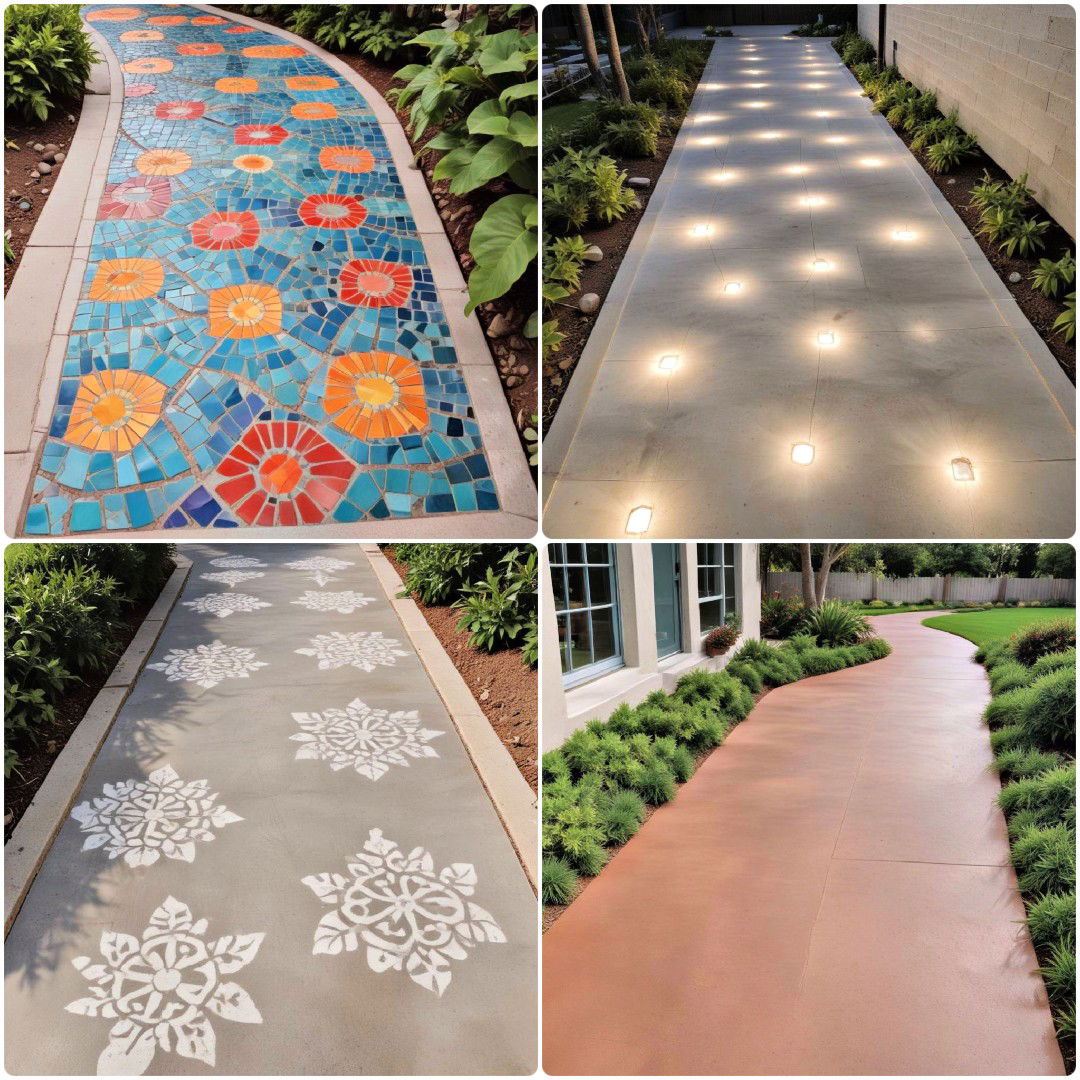
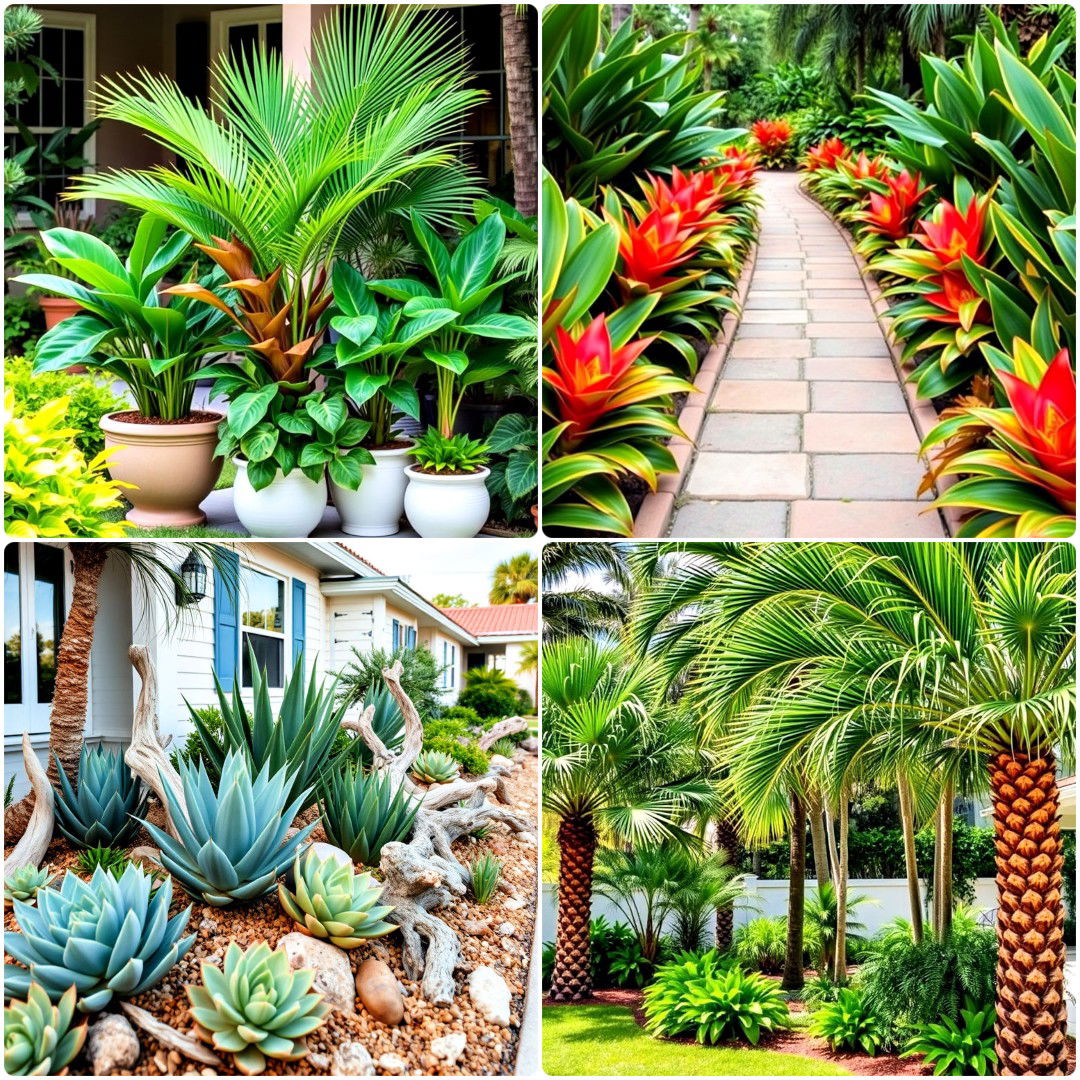
Leave a Reply